
Gemstone Colors - List Of Gemstones By Color
 The world of colored gemstones offers a rainbow of opportunities, with colors and shades to match every style. Whether you already have a favorite gemstone color or you’re exploring the options, there are plenty of colorful gemstones to choose from.
The world of colored gemstones offers a rainbow of opportunities, with colors and shades to match every style. Whether you already have a favorite gemstone color or you’re exploring the options, there are plenty of colorful gemstones to choose from.
If you’re feeling overwhelmed with options, don’t fret! Today, we’ll cover a comprehensive list of gemstones by color. Let’s kick it off with our fiery red gems!
Red Gemstones
Red is one of the rarest color categories for gemstones, particularly pigeon’s blood ruby red. Ruby and garnet are well-known types of red stones, but they aren’t the only options! Explore our list of red gemstones below!

Agate - Agate is a translucent chalcedony mineral, and the best-known red varieties are fire agate and sardonyx. Fire agate is iridescent and reddish-brown. Sardonyx combines agate and onyx to create a brownish-red gemstone with white and orange bands.

Andesine-Labradorite - Andesine labradorite is a red opaque stone that’s usually flesh-red but ranges from brown and salmon-pink to orange or red. Most red andesine is heat-treated, but some form naturally.

Beryl - Red beryl, or bixbite, is a raspberry red to deep rose gemstone. These rare red gemstones are the rarest beryl variety, estimated to be 1,000 times more valuable than gold.
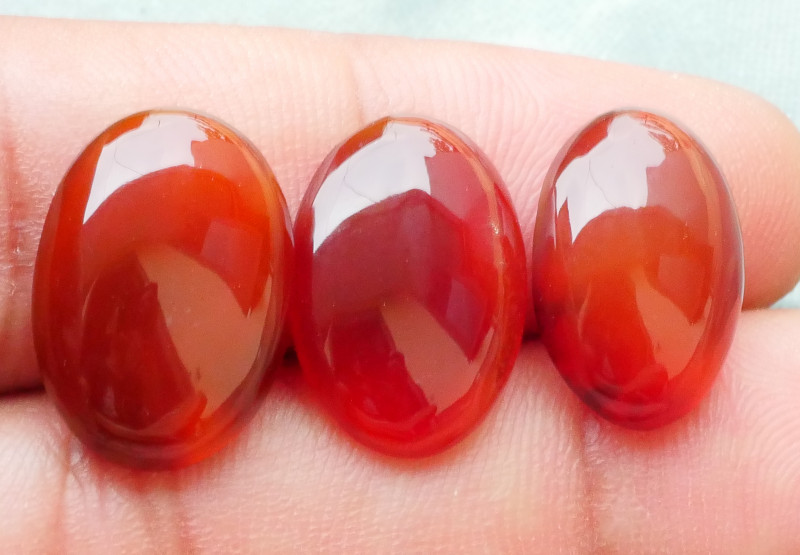
Carnelian - Carnelian is a red-orange chalcedony crystal in yellow, red-orange, brownish-red, or a combination of these hues. This stone with red and white bands is typically the most affordable chalcedony gem.

Cinnabar - Cinnabar is a brownish-red or dark red stone composed of mercury sulfide, making it potentially toxic to handle raw specimens.
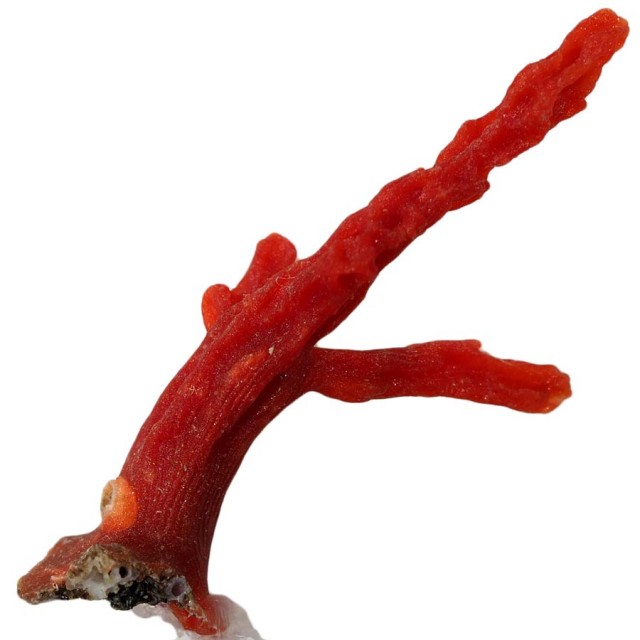
Coral - Coral is an organic gemstone in salmon-pink, orange, or red. Some call it “Moonga” or “Praval.” Red coral, or precious coral, is the vivid pink to red material most often used for red stone jewelry.
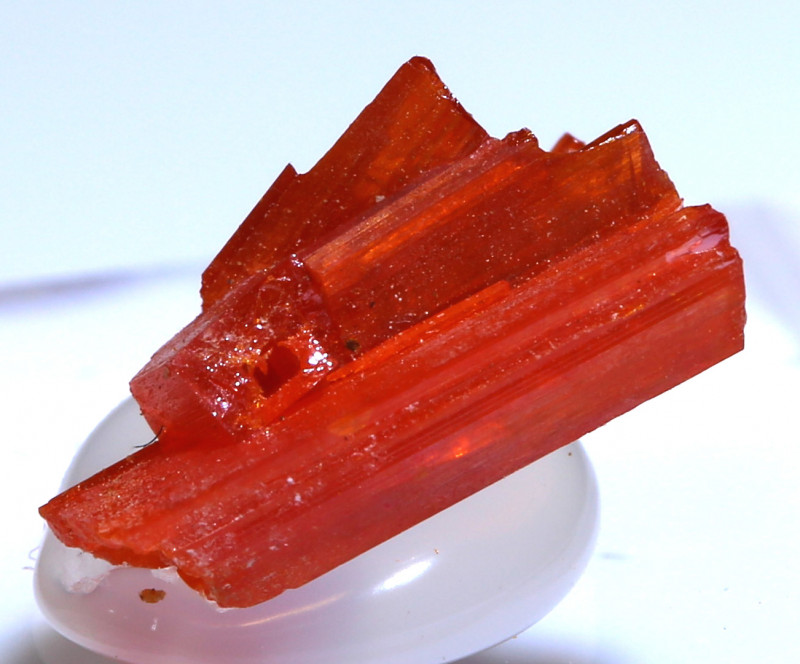
Crocoite - Crocoite is a cherry-red to saffron-colored gemstone with a yellow-orange streak. Though it comes in orange and yellow, red is the most common.
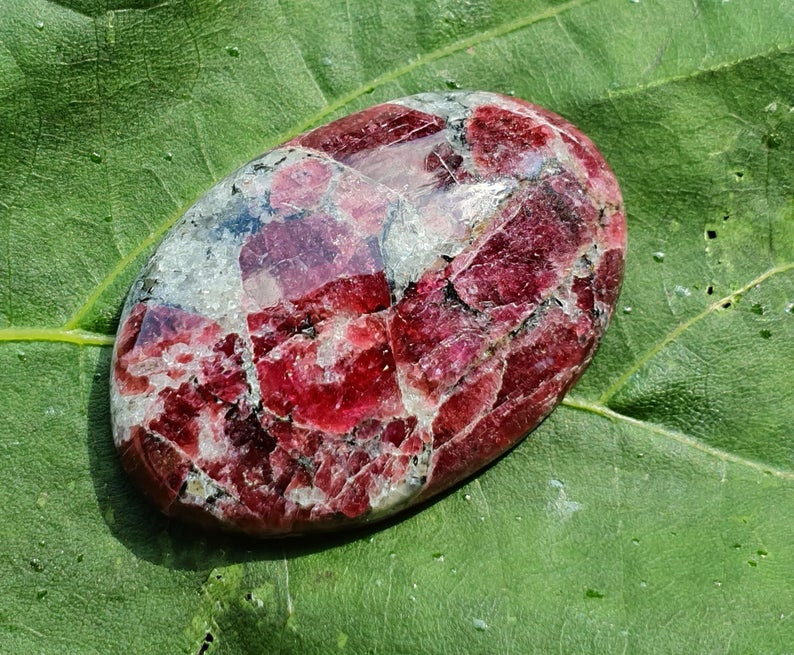
Eudialyte - Eudialyte is a red-orange, brownish-red, or magenta gemstone. Its main source, Russia, produces carmine-colored gems nicknamed “Dragon’s Blood.” Eudialyte is slightly radioactive but safe to handle when under 1 g (5 cts).
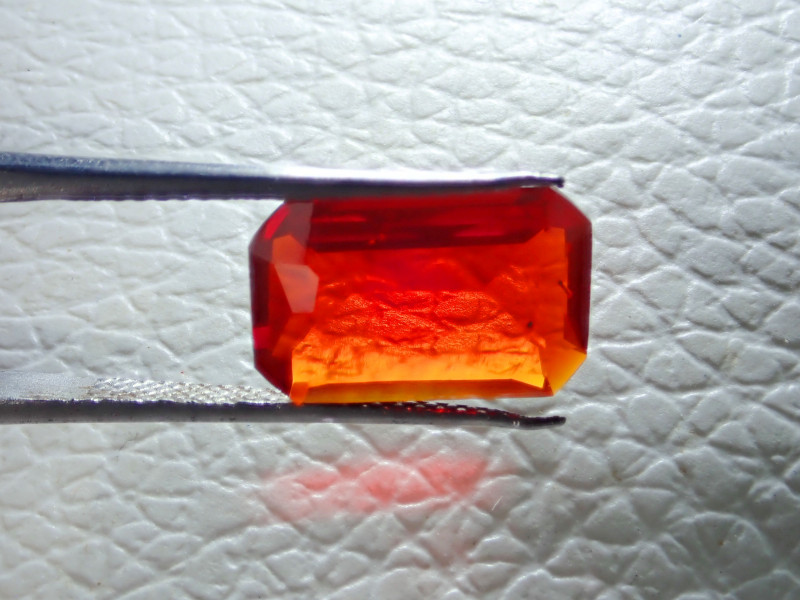
Fire Opal - Fire opal is a uniquely translucent, facetable opal in bright yellow, orange, or red hues. Mexican fire opal is transparent and doesn’t show play-of-color. Ethiopia produces “precious fire opal,” with iridescent green and violet play-of-color.

Garnet - Red garnets are the most popular type of garnet, with pomegranate, burgundy, and purplish-red varieties. Different garnet types vary in chemical composition, price, and crystal shape.

Jasper - Jasper encompasses nearly all opaque chalcedony stones and is usually patterned. Red jasper varieties include blood jasper, bloodstone, mookaite jasper, poppy jasper, and sonora sunset jasper.
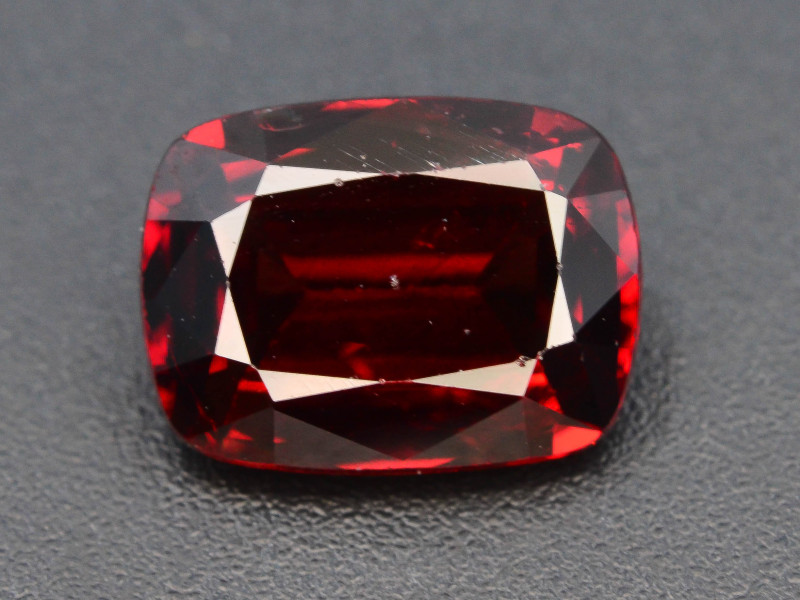
Pyrope Garnet - Pyrope garnet is a pomegranate-red garnet variety, but most deep red garnet gemstones are pyrope and almandine. Some pyrope and spessartite mixtures change color from pink to brownish-green.
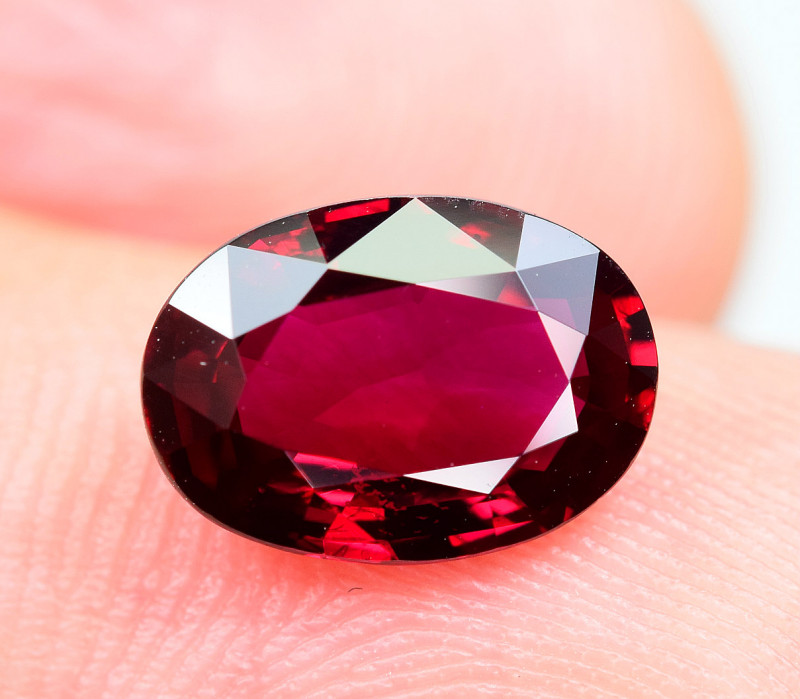
Ruby - Ruby is a pink to blood-red precious gemstone. These are the red stones of corundum, contrasting blue sapphire. Blood-red gemstones like rubies have red fluorescence and impressive hardness.

Spinel - Red spinel, or “ruby spinel,” is a translucent, orange-red gemstone that more commonly comes in bright red and vibrant pink, but also in magenta hues. Historically mistaken for ruby, red spinel is rarer but more affordable.

Star Garnet - Star garnet is a dark almandine or almandine/pyrope garnet with a four-rayed or six-rayed star of reflected light called asterism. These dark red stones may also be brownish-red or reddish-black.

Star Ruby - Star rubies are red or reddish-purple crystals with asterism. They're the rarest, most transparent ruby variety. These sought-after gems range from $1,000 to $4,000 per carat for 1-ct stones.

Tantalite - Tantalite is a dark red-brown gem with a black or brownish-red streak and submetallic luster. These red semi-precious stones can show strong pleochroism in brown and reddish-brown.
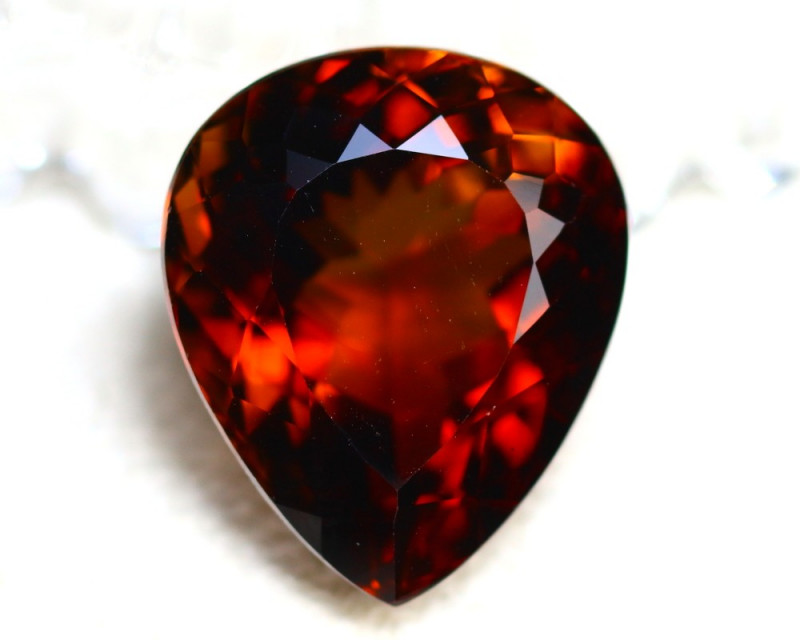
Topaz - Red topaz is among the rarest topaz colors, displaying deep burgundy, wine red, or fiery red hues. Brazilian imperial topaz can also be a pink-red stone.
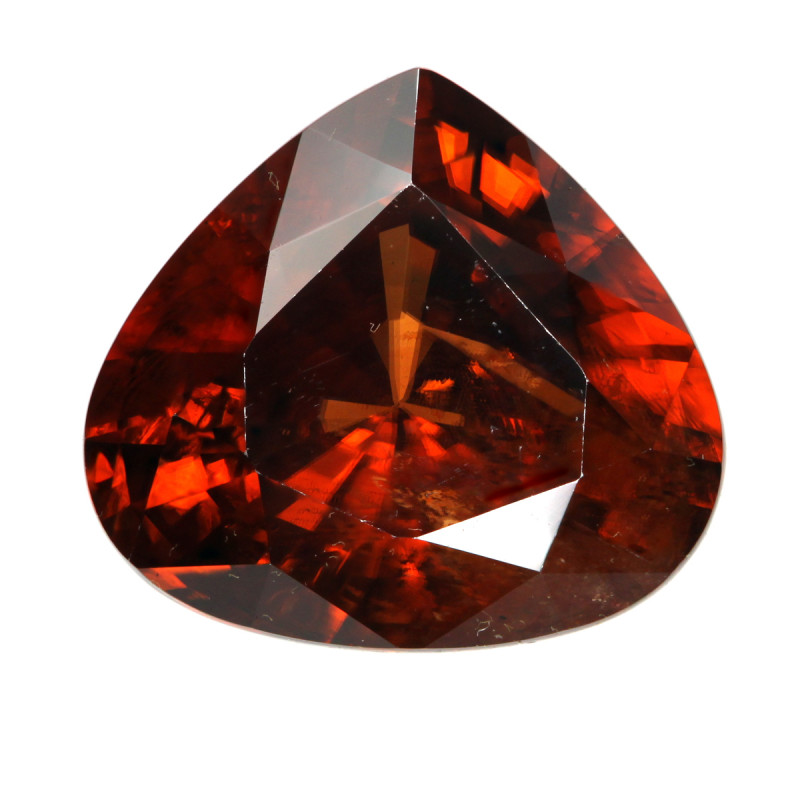
Zircon - Red is one of the most valuable zircon colors, and these red crystals may be vibrant red, red-orange, or burgundy. The terms “hyacinth” or “jacinth” historically referred to transparent red, yellow, or orange zircon.
Orange Gemstones
Orange gemstone names like sunstone or spessartite garnet are recognizable, but the many other orange-colored stones offer their own charm. Let’s cover our orange stones and crystals!

Amber - Amber is a yellow-orange to orange-brown gemstone composed of resin secreted by ancient trees to seal wounds in their bark. These stones often have insect or plant matter encased inside. Most of these types of orange gemstones are translucent and cloudy, but transparent amber gems are more valuable.

Andesine Feldspar - Andesine feldspar, or “andesine,” is a honey-red, salmon-pink, or orange-colored stone. Andesine feldspar may show mild labradorescence (iridescent reflections) and color changes from orange-red to deep green.

Aventurine - Orange aventurine is a quartz and feldspar, pumpkin orange, peach, or dark orange stone. The orange hue and signature aventurescence come from goethite or hematite inclusions.
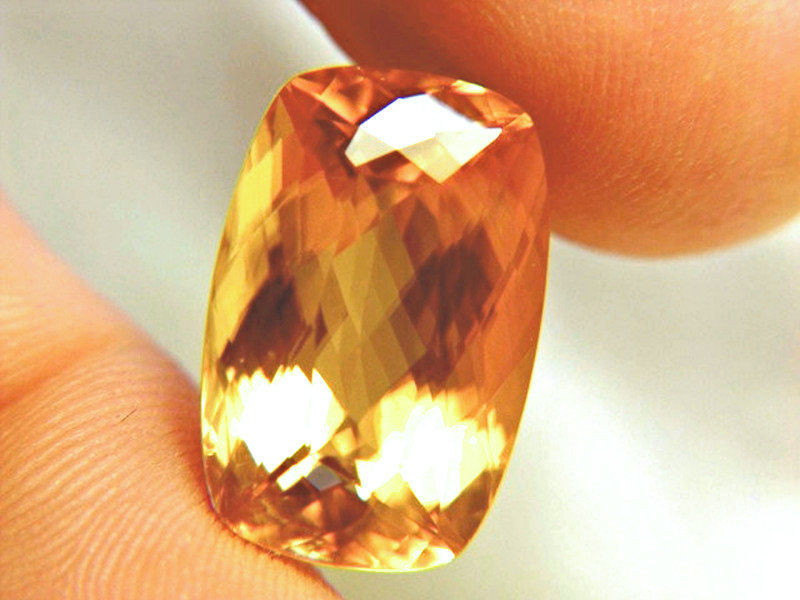
Calcite - Orange calcite is a form of gem-quality calcium carbonate in amber, honey-orange, and orange-red. These orange jewels are abundant and affordable, ranging from $1 to $30 for rough material.
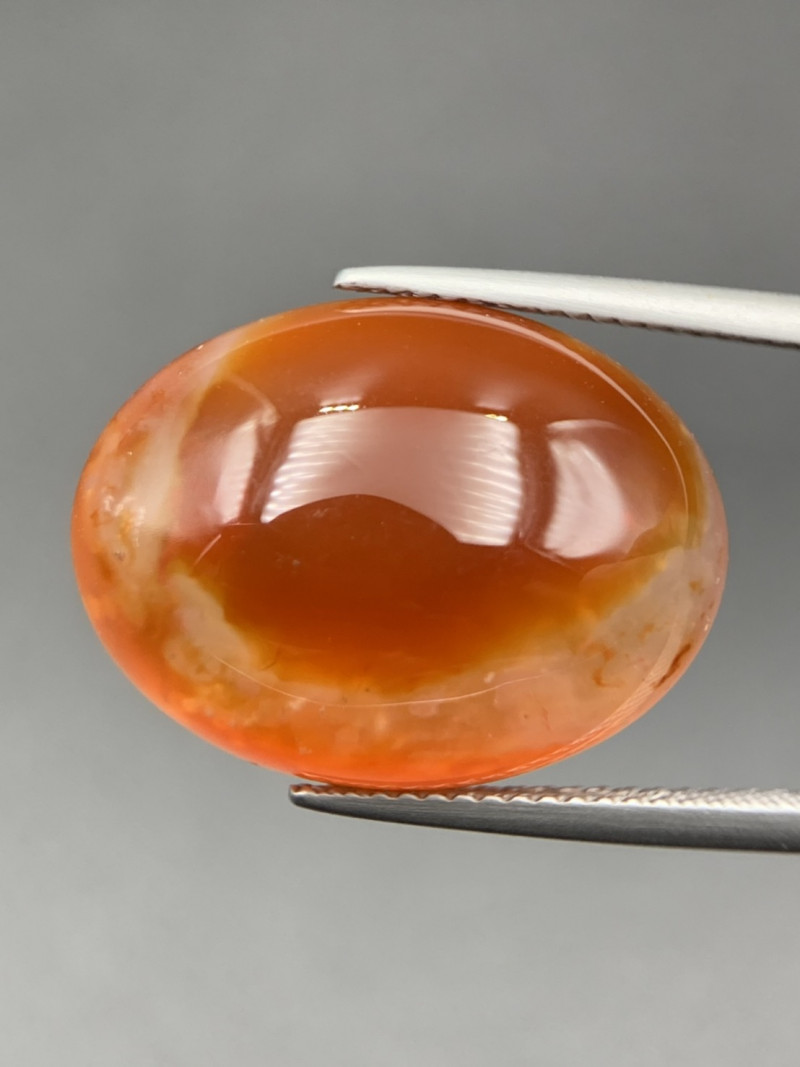
Carnelian - Carnelian is a brownish-orange, coral, or red-orange gemstone in the chalcedony family. These colors may show up together on banded carnelian gems.
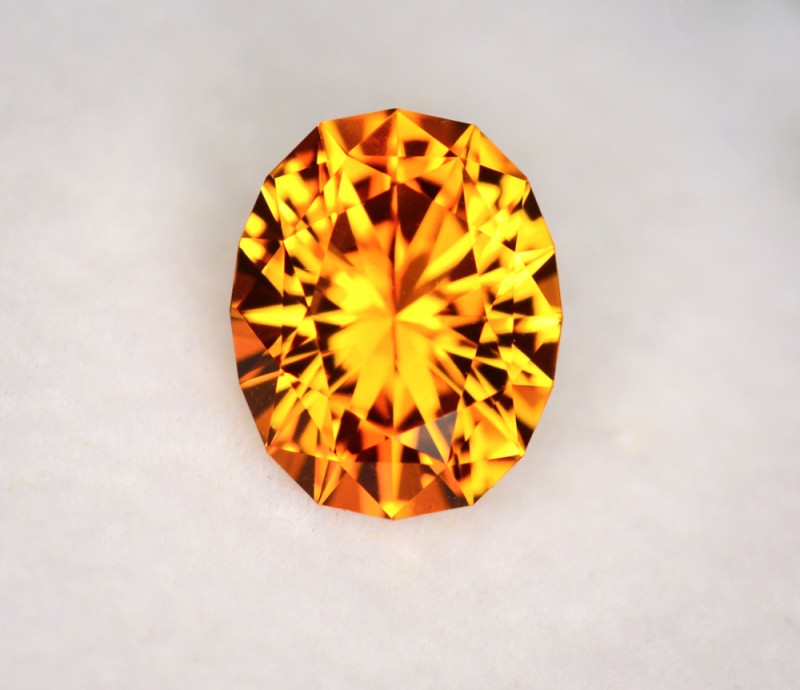
Citrine - Citrine is a bright yellow, orange, or reddish-brown gemstone, with the deepest reddish-orange crystals dubbed “Madeira citrine,” after the color of Portugal’s Madeira wine. The vibrant yellow-orange gemstone varieties are the most valuable, but many of these are heat-treated amethyst.
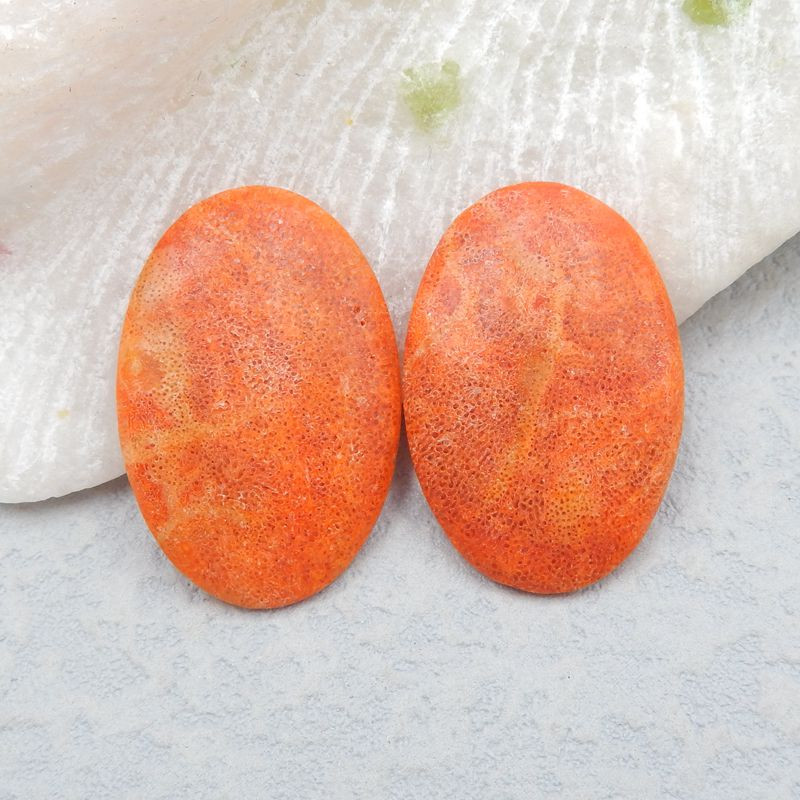
Coral - Coral is an organic pink-orange gemstone. It forms from the hardened, branching exoskeletons of sea creatures called coral polyps, which get their color from pigments in the water produced by bacteria, plants, or algae.

Fire Opal - Fire opal is a translucent to transparent, red, yellow, or bright orange mineraloid gemstone, though some show all three colors. Ethiopian precious fire opals may be hydrophane (able to absorb water).
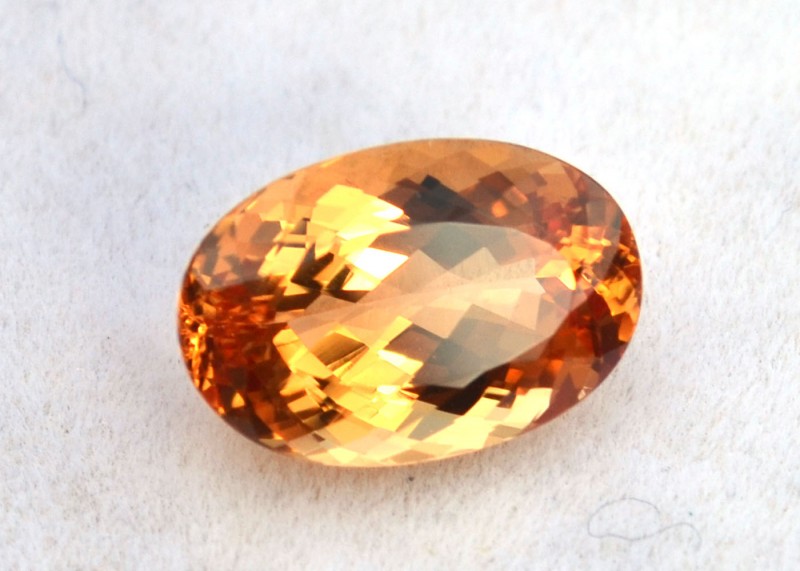
Imperial Topaz - Imperial topaz, or Golden Topaz, is a golden-orange, pink-orange, or deep orange-red stone and the most valuable topaz. Some experts only classify imperial topaz as yellow-orange with red pleochroism, but most are pink-orange stones.

Jadeite - Jadeite is one of the two “jade” stones, but the only one that can be orange. Orange jadeites can be soft apricot to deep red-orange gemstones.

Jasper - An opaque chalcedony with many varieties, orange stones in the jasper family include Noreena Jasper, Carrasite Jasper, Orbicular Jasper, and Flame Jasper. Bumblebee Jasper is an orange and black stone (with yellow and black stripes) but technically agate.

Padparadscha Sapphire - Padparadscha is a clear orange stone and the rarest, most expensive sapphire variety. The name of these pinkish-orange or yellow-orange stones comes from the similarly colored lotus flower.

Sardonyx - Sardonyx is an opaque agate variant with layers of dark, color-banded onyx and brownish-red sard (a translucent chalcedony variety). This red and black gemstone is usually reddish-orange with lighter or darker color-banding, though you may see white, orange, red, or black mixed in.
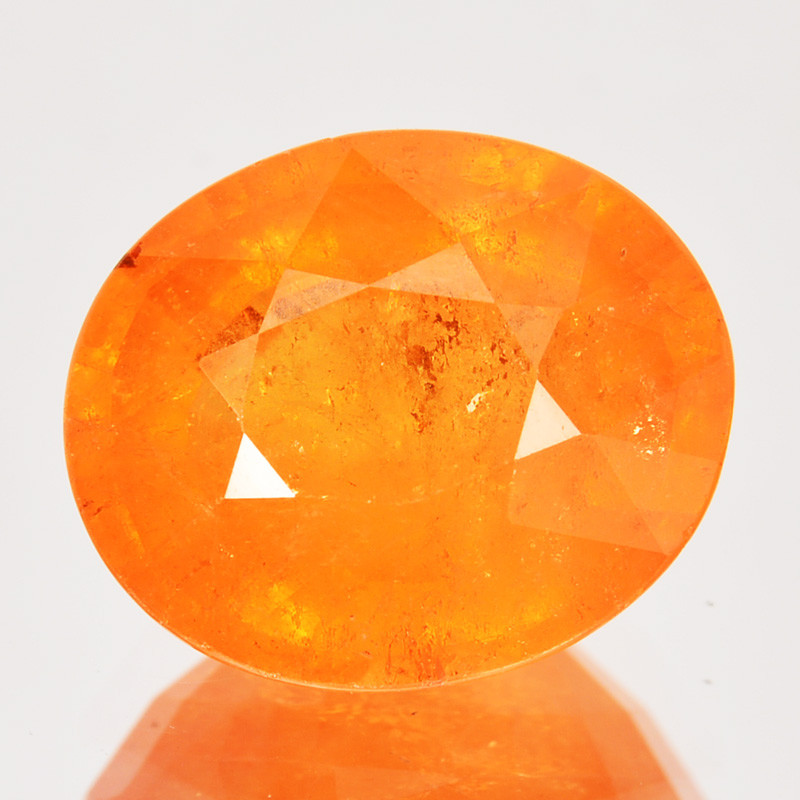
Spessartite Garnet - Spessartite garnet, or “mandarin garnet,” are mandarin orange to brownish-red crystals. When spessartite mixes with pyrope, these orange-colored stones may change colors. In mineralogy, these are called "spessartine."
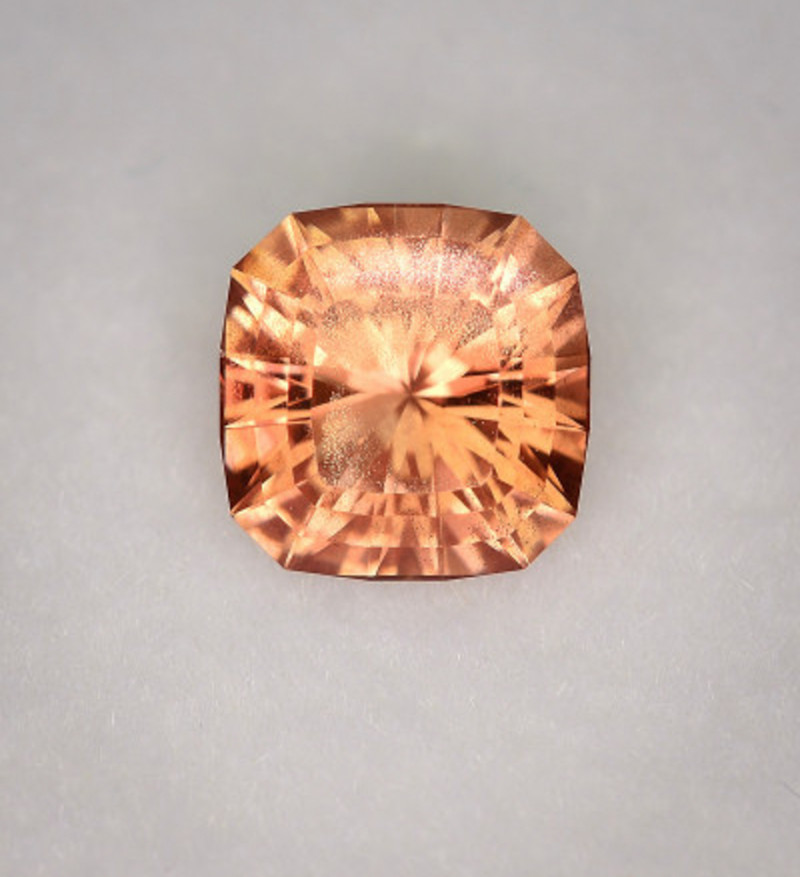
Sunstone - Sunstone is a pink to reddish-orange gem with a spangled look and aventurescence, a metallic glittering effect. Larger inclusions in this sparkly orange stone lead to glittering reflections, while smaller inclusions coat the stone with a red or gold shimmer.

Tangerine Quartz - Tangerine quartz stones are light yellow to rust-colored stones made of hematoid quartz. They may also be called “orange quartz” or “sunfire.” During its formation, water rusts hematite, making it bond to clear quartz and give an orange coating.
Yellow and Golden Gemstones
Next, we have our list of yellow gemstones! Citrine and yellow sapphire are perhaps the most popular yellow jewels, but lesser-known varieties like danburite are worth your attention. Read on to learn about yellow stones and crystals!
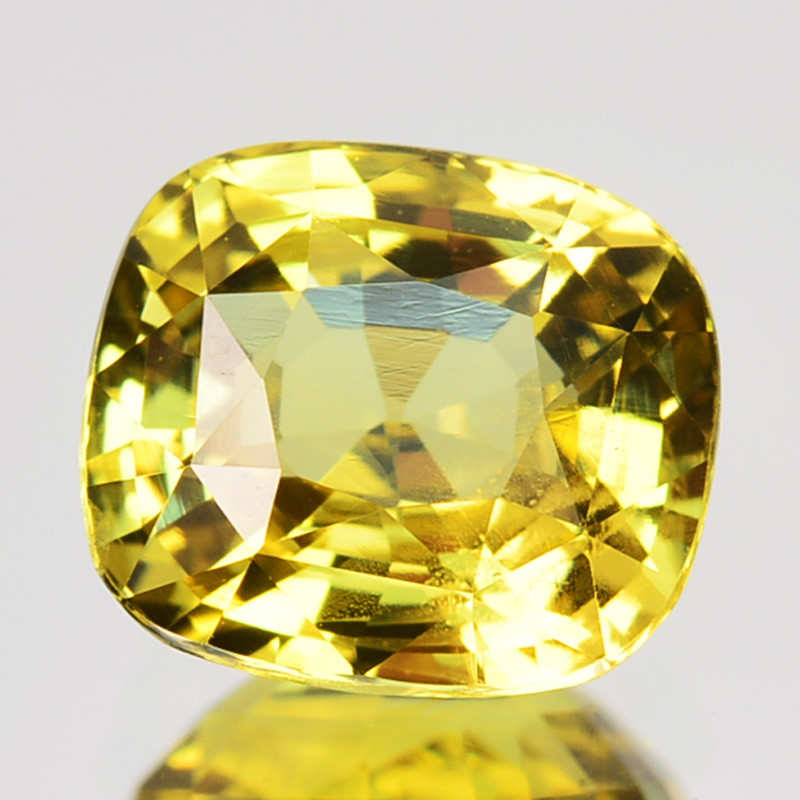
Chrysoberyl - Chrysoberyl is a pale yellow-green crystal with two yellow gemstone varieties: ordinary and cymophane (cat’s eye). Ordinary chrysoberyl is honey yellow to green and cymophane (or cat’s eye chrysoberyl) is deep honey to yellow-green. Cymophane green and orange gemstones have a chatoyant cat’s eye effect.
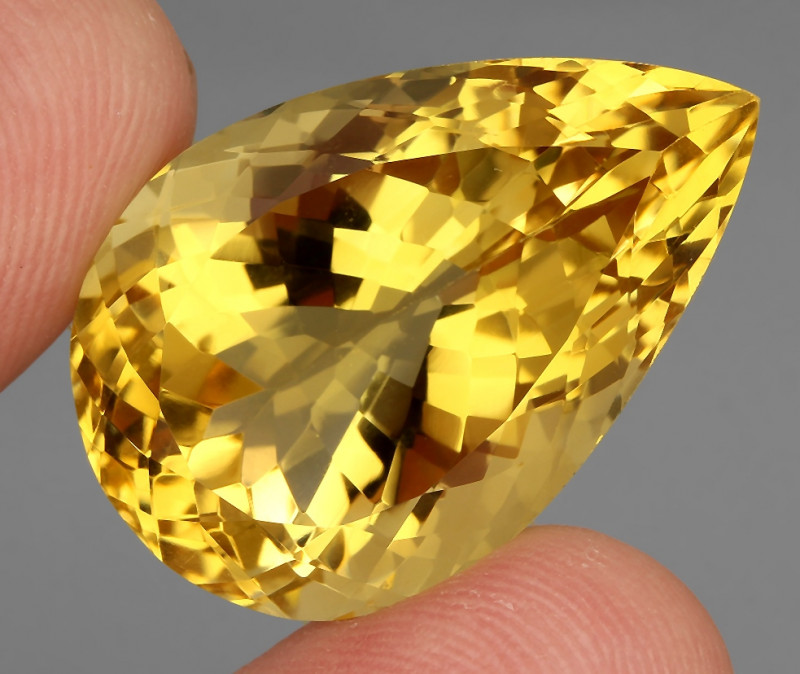
Citrine - Citrine is one of the most popular yellow semi-precious stones, composed of translucent quartz with shades from pastel yellow or yellowish-white to vibrant lemon or orange-yellow. The similar light yellow stone lemon quartz differs from citrine in that it doesn’t form naturally and shows a shorter range of greenish-yellow hues.
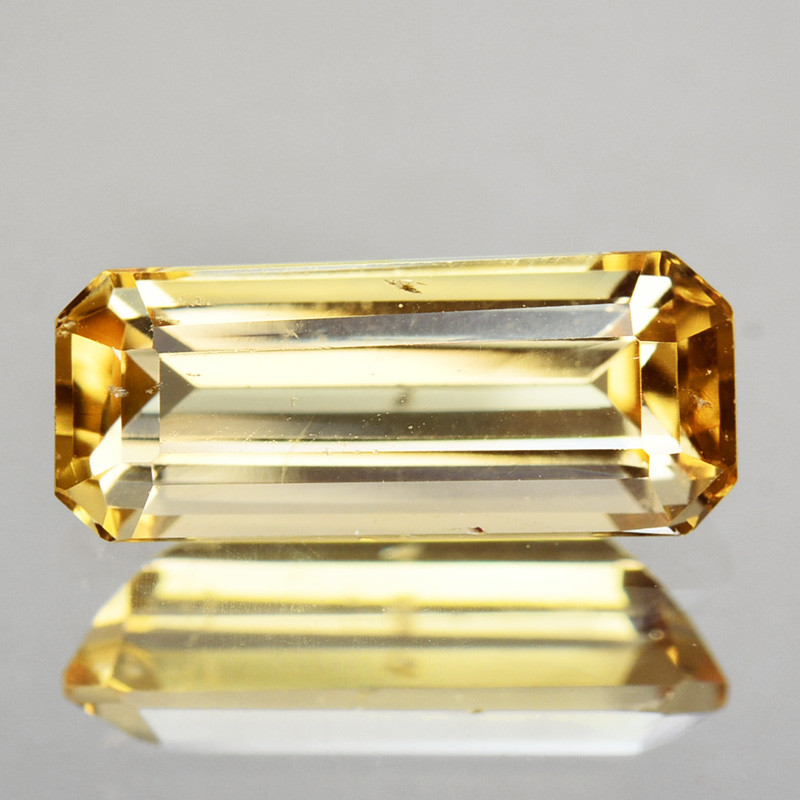
Danburite - Danburite is a colorless to yellow gemstone popular with collectors. This white, brownish-yellow, or pale yellow stone has great clarity, durability, and transparency.
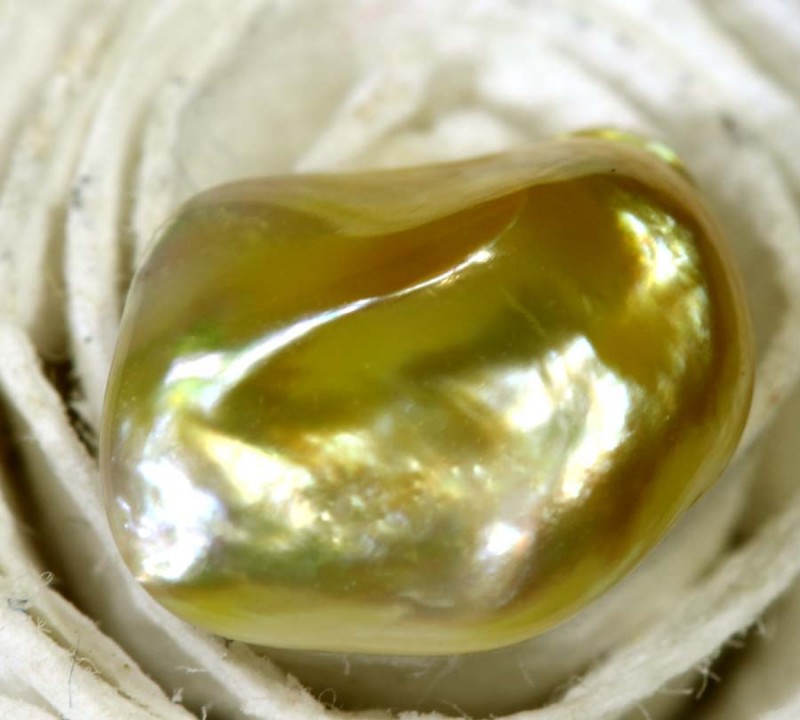
Golden Pearls - Golden pearls, or golden south sea pearls, are organic gemstones created by oysters forming nacre around harmful intruders like sand. These white or honey gold color gemstones come from South Sea gold-lipped pearl oysters and hold the ranking as the largest and most valuable pearls on the market.
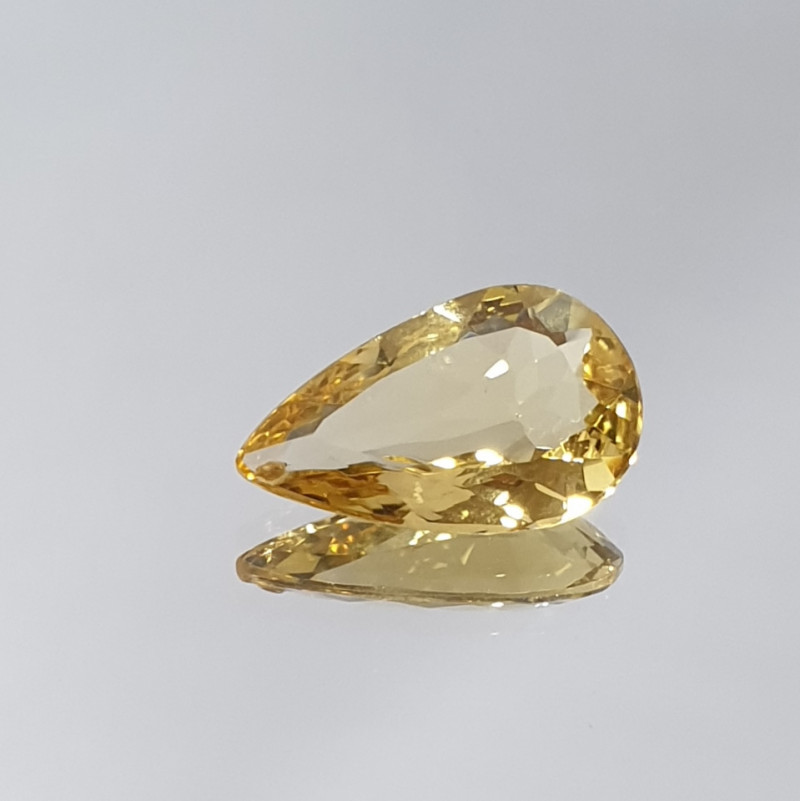
Heliodor - Heliodor is a pale yellow, greenish-yellow, or warm golden-yellow gemstone in the beryl family. Some jewelers call heliodor “golden beryl.” Others classify golden beryl as golden-yellow beryl and heliodor as greenish-yellow beryl.
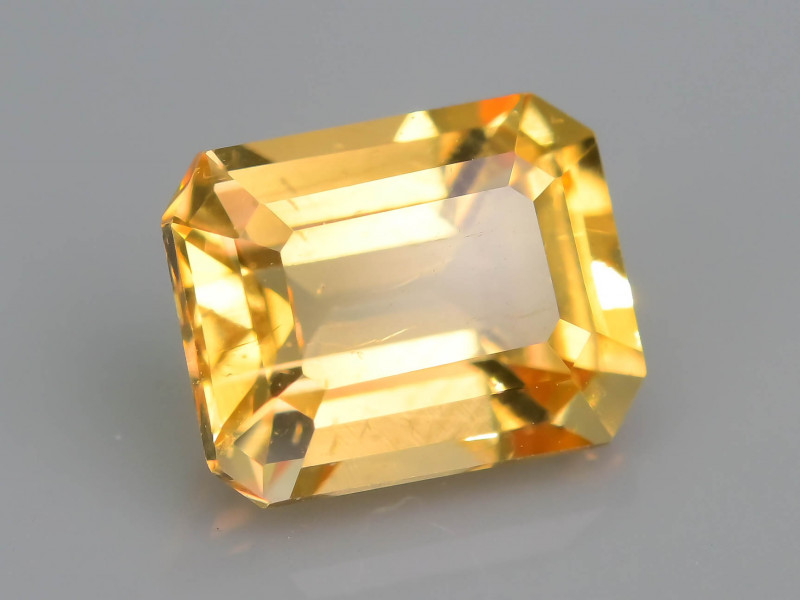
Imperial Topaz - Imperial topaz is a rare but highly prized clear yellow stone with light yellow, pinkish-yellow, or golden-orange coloring. Other yellow topazes include golden-yellow “yellow topaz” and orange-yellow “Golden Topaz.”

Mali Garnet - Mali garnet is a rare andradite and grossular garnet combo (or “grandite”) from Mali, West Africa. These bright yellow-green to golden-brown gems have great brilliance and fire, with white and colorful sparkling similar to diamond.
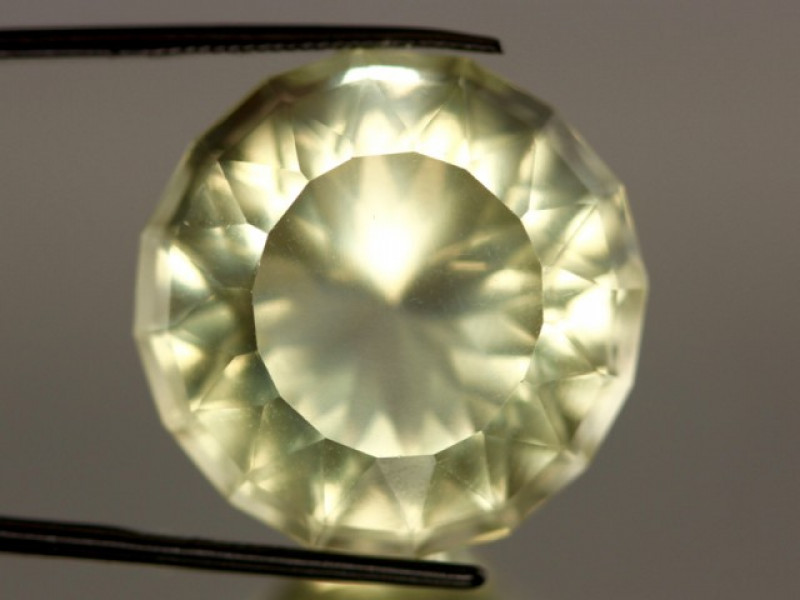
Orthoclase - Orthoclase is a light-colored yellow, champagne yellow, or yellow-green feldspar gemstone used for jewelry, ceramics, and decor. Its high potassium content has led to this yellow stone’s name, “K-spar.”
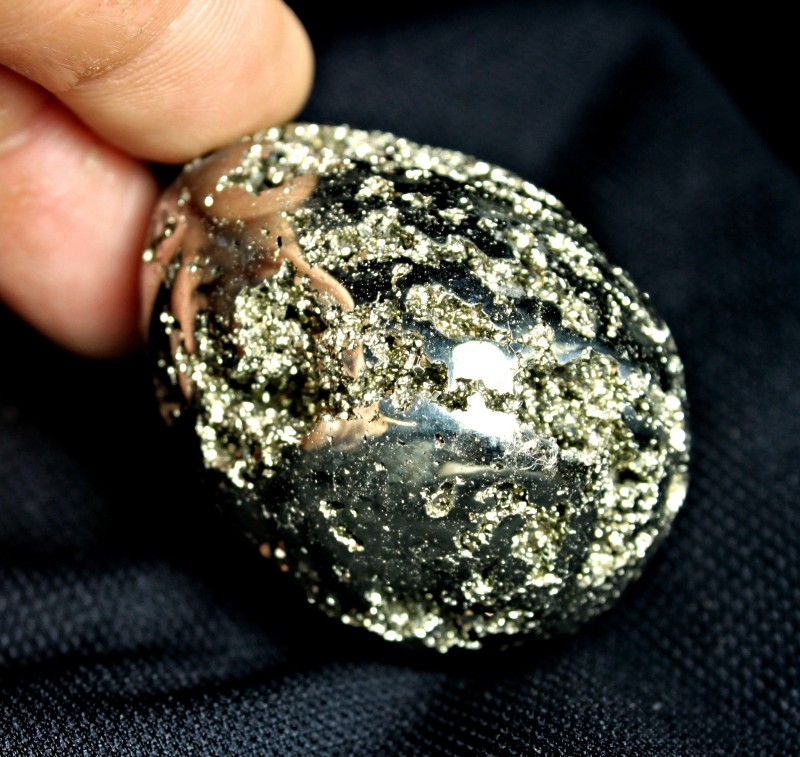
Pyrite - Pyrite is a metallic-looking, pale brassy-yellow stone. Its history of being mistaken for gold gained it the nickname “fool’s gold.” Some pyrite may contain 0.25 percent (or more) gold by weight.

Rutilated Quartz - Rutilated quartz, or rutile quartz, is a colorless to white gemstone with gold veins. This quartz stone has varying degrees of golden-yellow caused by needle-like rutile inclusions. How golden the stone appears depends on the amount of rutile. Other nicknames for this golden gemstone include “Venus hair stone” and “Cupid’s darts.”

Sapphire - Yellow sapphire, or Pukhraj, is a greenish-yellow to canary yellow gem with high durability and bright coloring. The yellow crystal name Pukhraj is Hindi for yellow sapphire and connects to Hindu astrology.
Green Gemstones
Emerald is arguably the top green gemstone, but have you heard about amazonite? Diaspore? Tsavorite? Those are only a few, so let’s jump into our green gemstones!
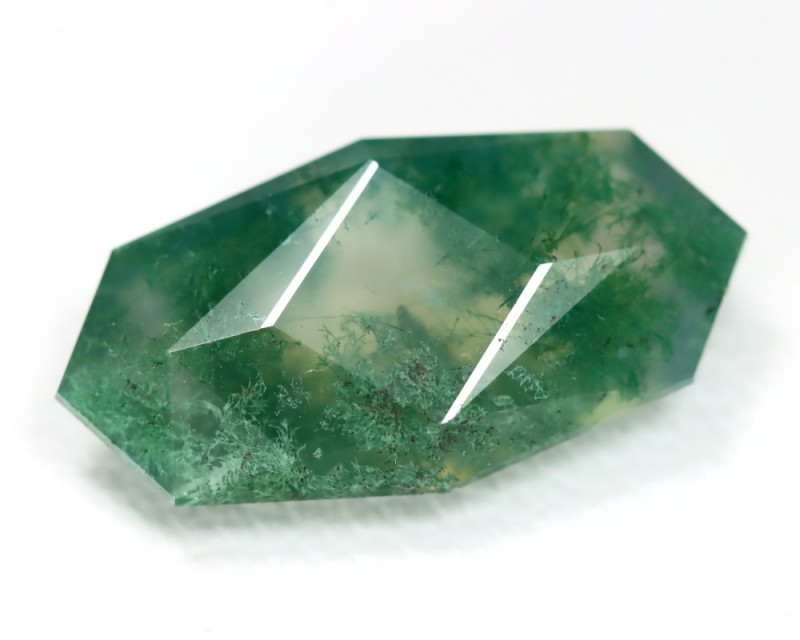
Agate - Agate varieties span numerous colors and multiple green varieties. One is the fern green to pale blue plant-patterned moss agate. Other types include fossil fish-eye agate and the green and white gemstone Botswana agate, which has white color banding.

Alexandrite - Alexandrite is a rare color-changing chrysoberyl variety known for its strong transitions from emerald-green in daylight to ruby-red at night. Some will look blue, teal, or brownish-yellow in daylight, then purple, pinkish-purple, or yellow-green in incandescent light.

Amazonite - Amazonite, or “Amazon stone,” is a green to blue-green gem named after the Amazon River, despite not being found there. This light green opaque stone shows weak UV fluorescence in olive green.

Apatite - Apatite comes in many colors but is most popular in blue-green or ocean blue crystals. This light green translucent stone’s composition is calcium phosphate, the same as our bones and teeth.

Aventurine - Green is arguably the most well-known aventurine color, with seafoam, shamrock, or forest green shades. This crystal is a mix of quartz and feldspar with a glittering surface caused by mica inclusions.
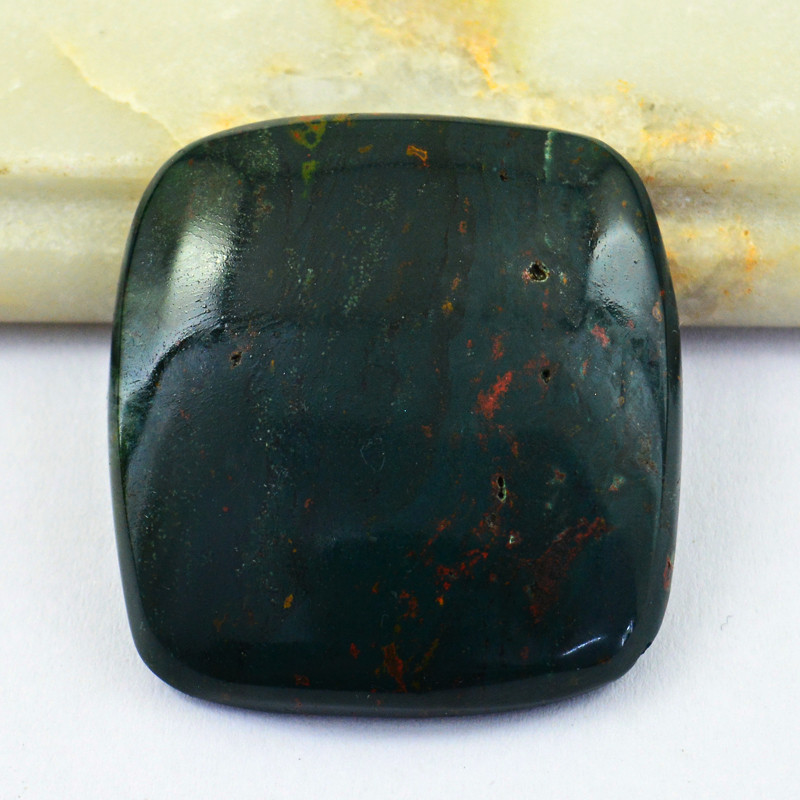
Bloodstone - Bloodstone, or heliotrope, is a dark green stone with red flecks. The blood-like spattering in this red and green gemstone comes from hematite, but if colors besides red and green appear, the stone is “Fancy Jasper.” Another green jasper is the black and green gemstone crocodile jasper.
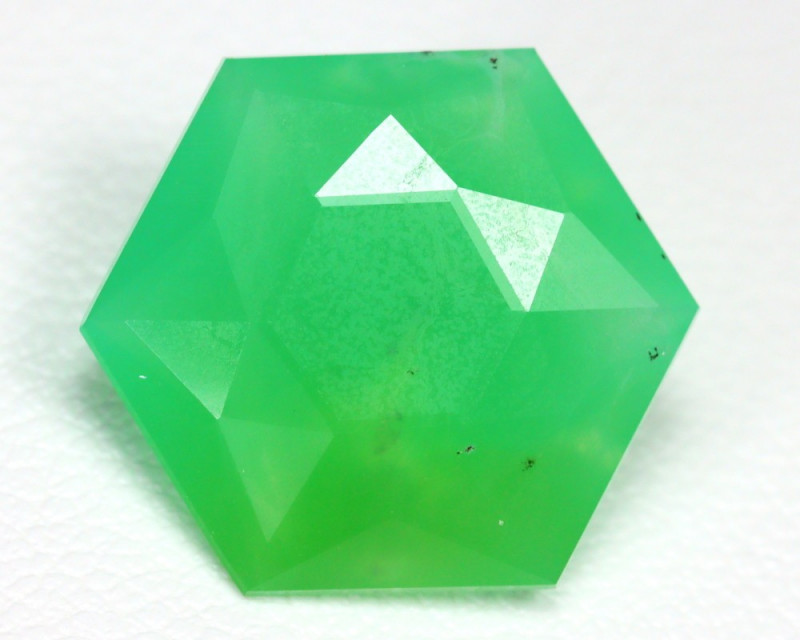
Chrysoprase - Chrysoprase is a semi-transparent to opaque apple-green chalcedony crystal which may show yellow-green or yellow hues. Though similar-looking to chrome chalcedony, chrysoprase’s color comes from nickel. Chrome chalcedony’s, on the other hand, comes from chromium.
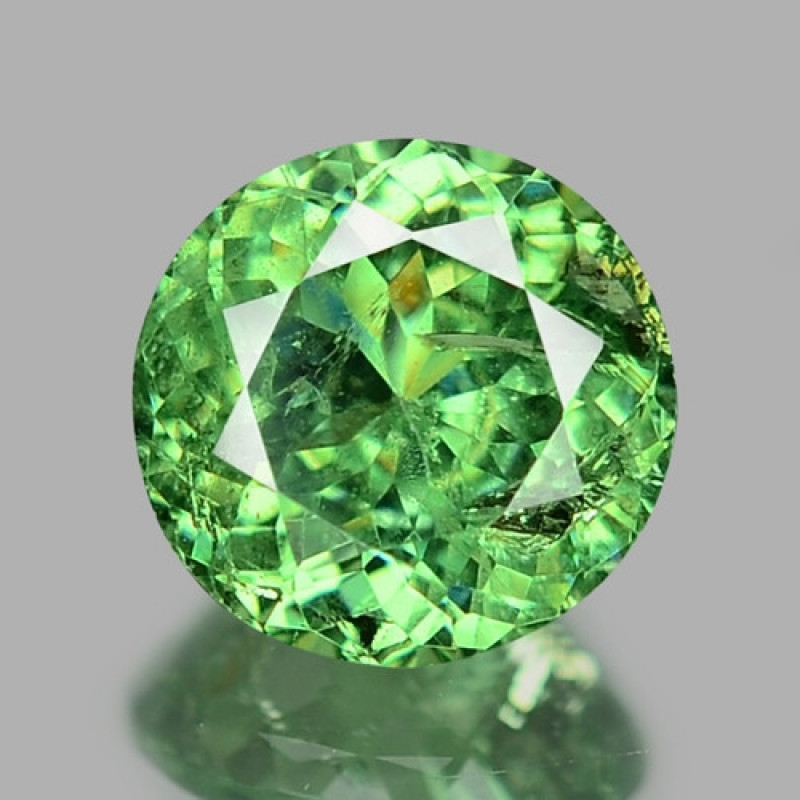
Demantoid Garnet - Demantoid garnet is a vibrant green to olive-green gemstone and is currently the most valuable garnet variety. These stones are unique because they have a fibrous radiating inclusion called the “horsetail” that raises their value. Another green garnet variety worth mentioning is the brilliant, grossularite garnet tsavorite.

Diaspore - Diaspore is a color-changing gemstone in kiwi green, reddish pink, and champagne under different lighting, though its pleochroism means violet, pink, or dark red may appear too. Turkey’s diaspore may be called Zultanite or Csarite.

Emerald - Emeralds are world-famous deep green, yellow-green, or teal beryl gemstones. This precious stone’s colors often have yellow and blue undertones. Only those with medium to dark saturation are officially classified as “emeralds.”
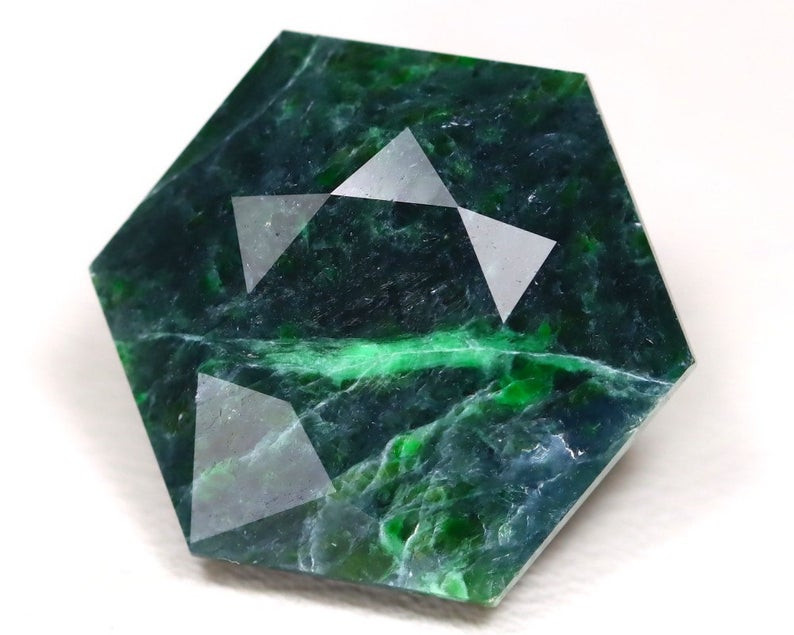
Jade - “Jade” refers to two similar-looking gems with different properties and values: jadeite and nephrite. Nephrite comes in more muted, pale to deep greens, with dark green types sometimes called “spinach jade.” Jadeite is more valuable and comes in a range of green hues, the most valuable being an emerald-green hue called “Imperial Jade.”
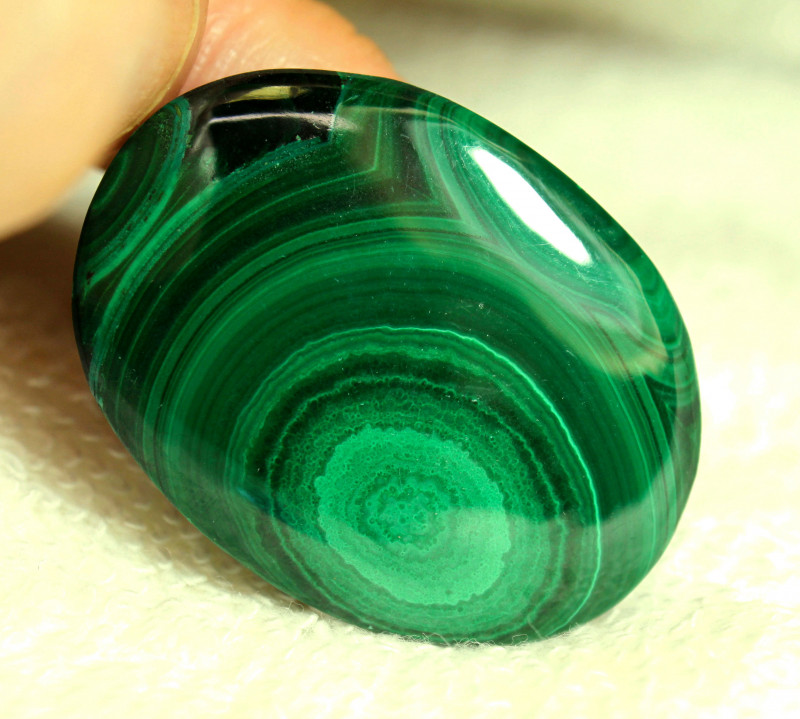
Malachite - Malachite is an opaque stone with light and dark green shades creating swirls, bands, and other patterns. This dark and light green stone’s name comes from the Greek word for mallow leaf, which has a similar color.
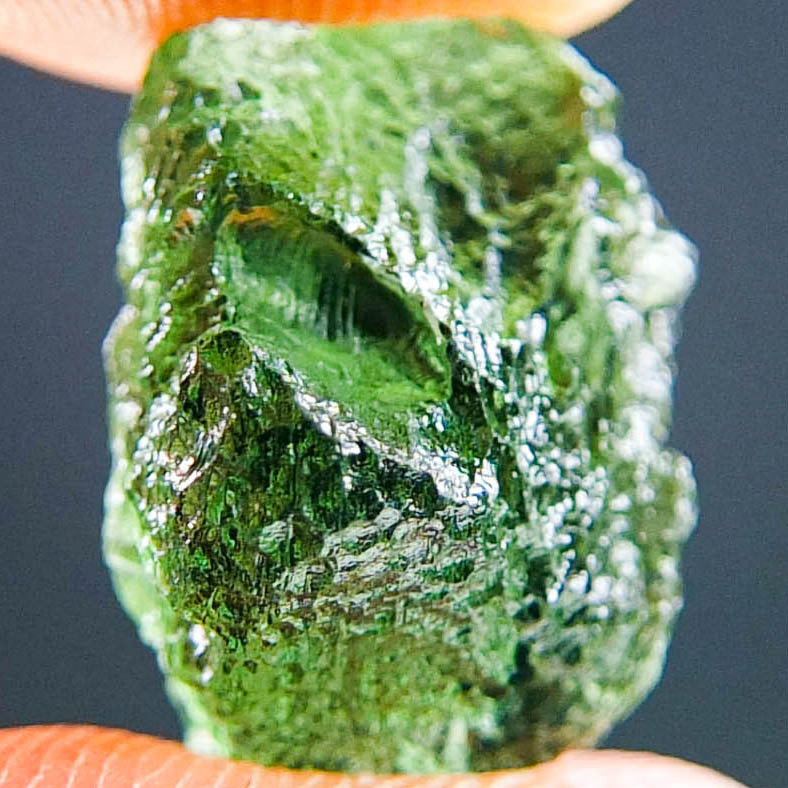
Moldavite - Moldavite is a rare, translucent tektite variety that's usually bottle-green but may be pale yellow-green to forest-green. These gems are silica-glass and often have unique glassy, rippled texture resembling heat waves.
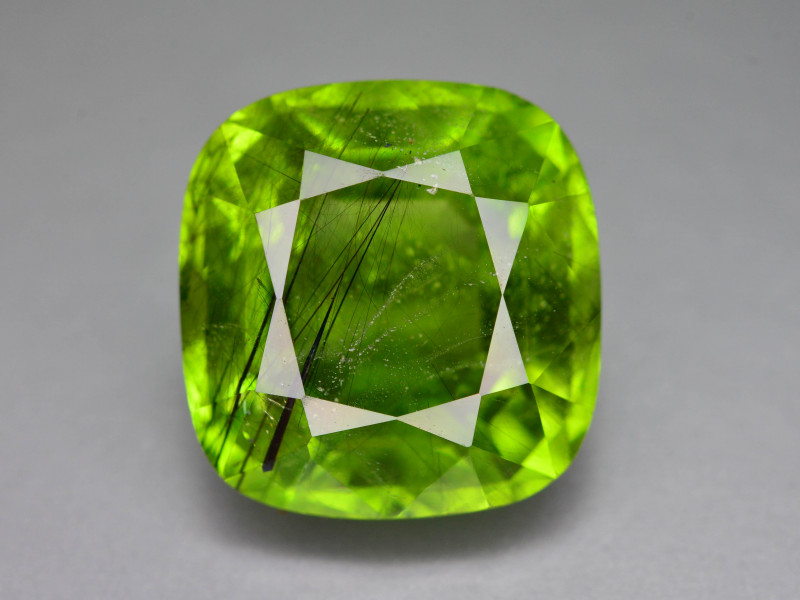
Peridot - Peridot, or chrysolite, is an olivine gemstone in shades of forest green with yellow undertones, or olive-green with amber undertones. Peridot varieties are usually based on locale, but space peridot is a rare variety from meteorites!
Blue Gemstones
When thinking about blue gemstones, sapphire is often the first to come to mind. However, there are also light blue, blue-green, and even orange and blue gemstones to choose from! Let’s get into our blue stones and crystals.
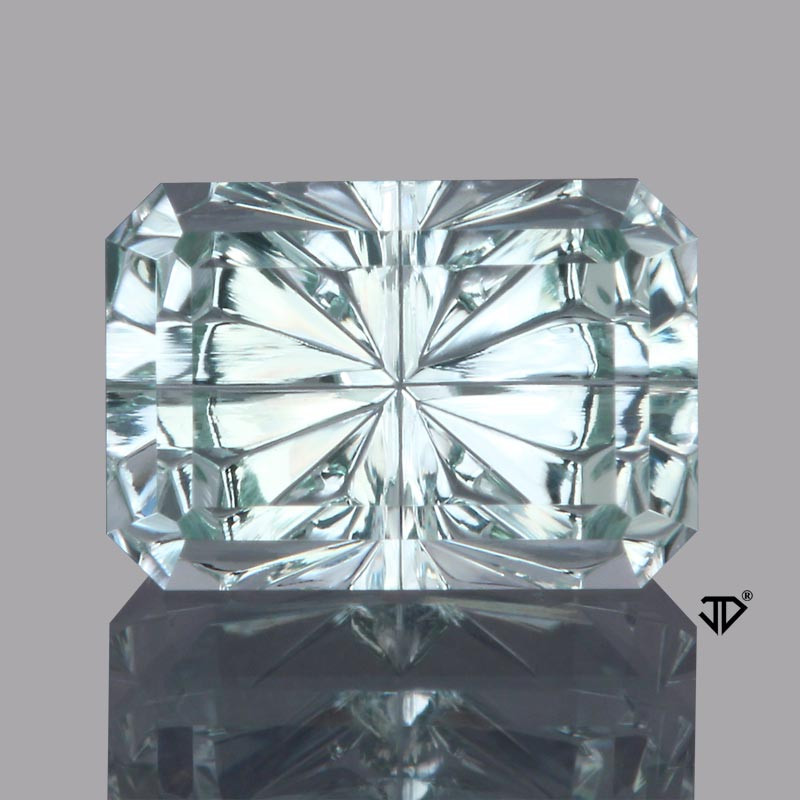
Aquamarine - Aquamarine is a pale blue, blue-green, or seafoam green crystal with excellent clarity. Most aquamarines are light green-blue, but the most valuable ones have a rich, deep blue called Santa Maria blue.
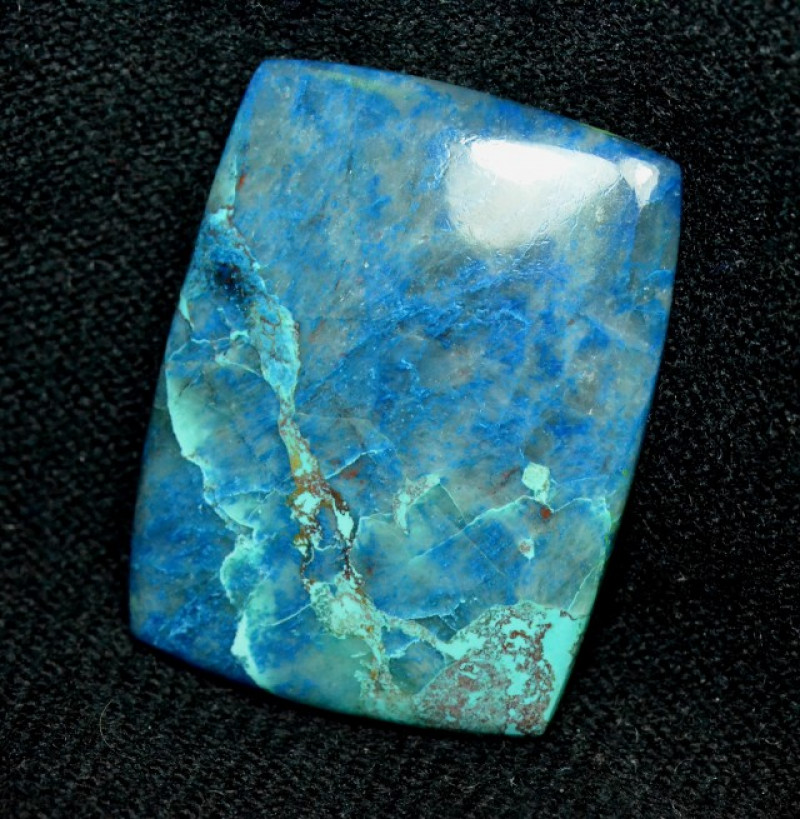
Azurite - Azurite stones, or lapis armenus, are turquoise-colored or vivid azure blue gemstones related to malachite. Malachite frequently mixes with azurite, creating blue stones with bright green speckles or color-banding called azurmalachite.

Chrysocolla - Chrysocolla is a blue, green, blackish-blue, or teal gemstone commonly found with brown veining. It may mix with malachite or azurite to create beautiful green and blue crystals.

Hawk’s Eye - Hawk’s eye, or blue tiger’s eye, is a gray-blue or dark teal-colored fibrous chalcedony gem. It’s related to tiger’s eye and pietersite, and all three stones have a strong cat’s eye effect.

Kyanite - Kyanite is a transparent to translucent blue-green, green, or dark blue gemstone. Blue kyanite is the most common and popular, though kyanite can be orange, black, green, and other colors.

Lapis Lazuli - Lapis lazuli, or lapis, is a rich cobalt blue crystal with white and gold speckles, historically used to create “ultramarine blue” paint. Lapis must be 25 percent lazurite, but pyrite and calcite create the gold and white speckling.

Sapphire - The most famous blue gemstone, blue sapphire is a light blue to rich, royal blue crystal, usually with higher clarity than its red corundum counterpart, ruby. A rare sapphire variety is color-changing, appearing blue in daylight and purple in artificial light. Another rare type is the bi-colored sapphire, which can be a distinct blue and green or blue and white gemstone.
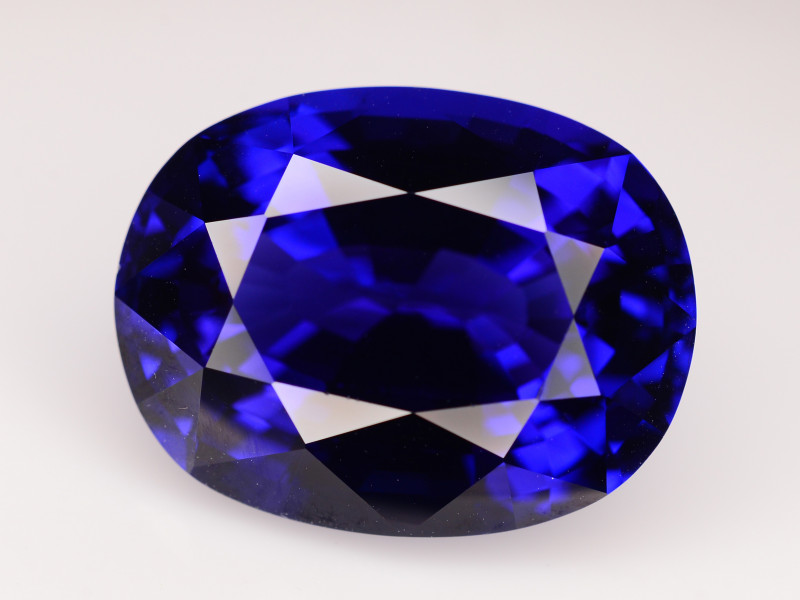
Tanzanite - Tanzanite is a translucent, dark violet-blue gemstone only found in Tanzania, Africa. These purple blue gems are almost always eye-clean (without visible inclusions). Lighting and viewing angles can make the stone appear to shift between blue, violet, and purple.

Topaz - One of the most widely known topaz colors, blue topaz usually comes in one of three shades: sky blue, Swiss blue, or London blue. Finding these as natural, raw blue gemstones is rare, and each of the three blues mentioned are created via lab treatments.
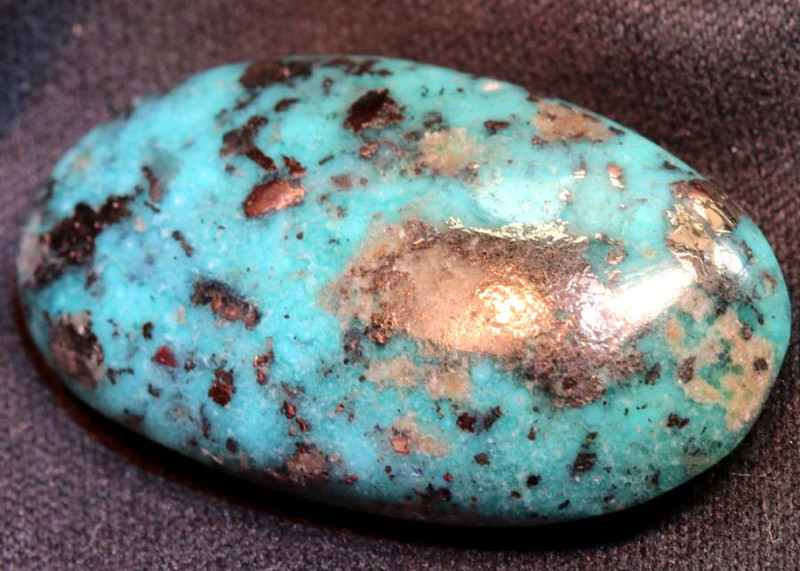
Turquoise - Turquoise is typically opaque, in pale to dark blue or blue-green hues. These gems usually have yellow or brown veining, making them a unique green and brown stone. Turquoise with a lace-patterned black matrix is called “spiderweb turquoise.”
Purple Gemstones
Amethyst is easily the most popular purple gemstone, though there aren’t many gems in this gorgeous hue available. The violet and purple gemstone list below offers diverse shades and styles!

Amethyst - Amethysts are affordable, lavender to magenta crystals often sold in geodes. When these purple quartz stones have pale hues, they’re called Rose de France amethyst. Amethyst and citrine can mix to create a purple and yellow gemstone called ametrine.

Charoite - Charoite, or “lilac stone,” is a pearly, lilac to deep purple gemstone with one-of-a-kind milky swirls in black, white, and purple shades. This translucent purple and white gemstone has strong colorless to rosy-pink pleochroism and occasionally a chatoyant glow.
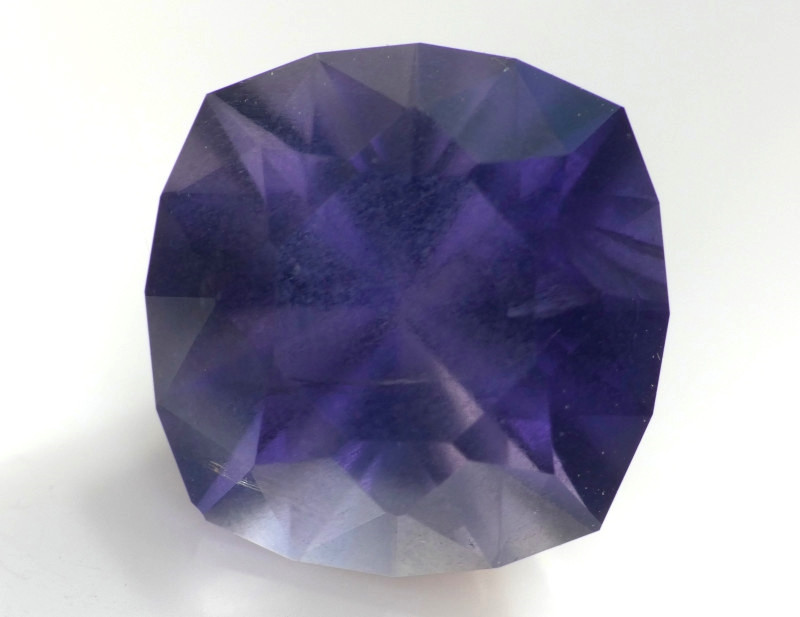
Iolite - Iolite is a gem-quality cordierite variety in pale to dark blue, violet, and other shades. The most valuable iolites are saturated violet-blue crystals. With the right clarity and cut, iolite can show pleochroism in sky blue, violet-blue, and yellow-gray.

Kunzite - Kunzite is a modern spodumene gemstone with pink to violet coloring. This crystal is usually a light pink or pinkish-purple stone, but the rare magenta crystals are most valued.
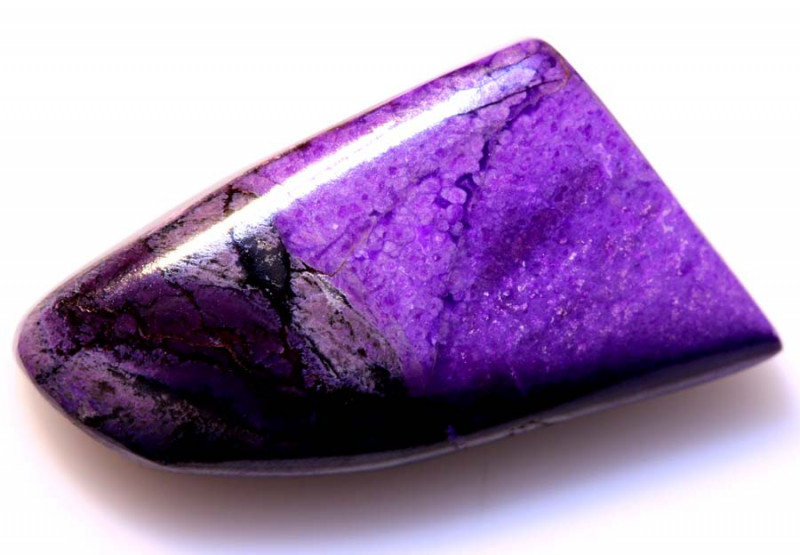
Sugilite - Sugilite is a rare, vibrant purple, pink, or fuchsia gemstone. It can be solid-colored, but it’s more commonly patterned with black or white. Other names for this purple and black gemstone include lavulite, royal azel, cybelene, and wesselite.
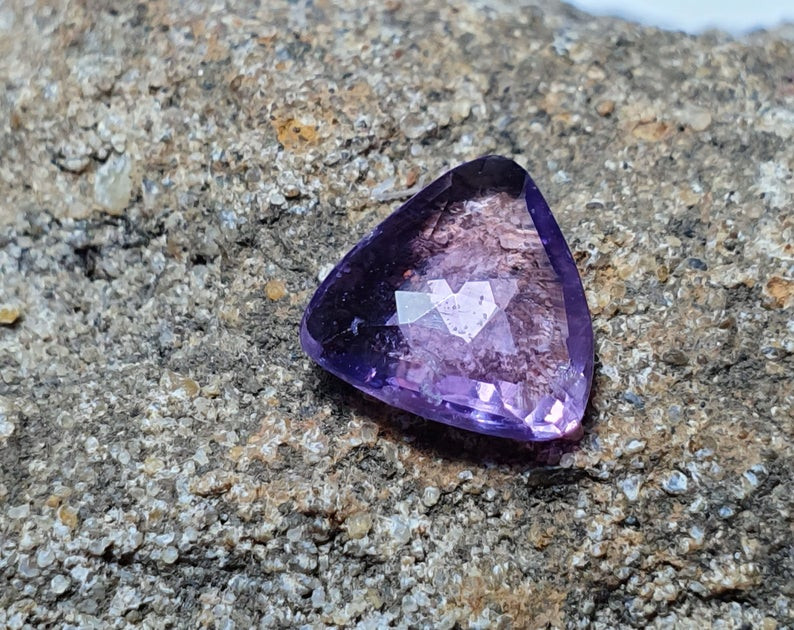
Sapphire - Purple sapphires are violet or indigo, though blue sapphires can shift into violet-blue or violet sapphires, becoming more affordable. The most highly valued purple sapphire, sometimes called Khooni Neelam, is either blue with pink to red spots or purple with a red glow.
Pink Gemstones
What stone is pink in color? Rose quartz is the first pink gem most people think of, but pink-colored gems come in light, dark, and mixed shades. Follow along as we dive into our list of pink crystals!

Coral - Pink Coral is a type of pinkish-orange precious coral found near Hawaii. These are usually marbled, hibiscus pink or pink and white gemstones cut into beads, cabochons, or carvings.

Kunzite - Kunzite is a spodumene variety in colorless, pink, or lilac gemstones, though its strong pleochroism means all three colors can appear at different angles. The pink and purple gems are delicate and can fade in color under extreme heat or sunlight.

Malaya Garnet - Malaya garnet mixes pyrope and spessartite garnet to create a vibrant peach or pink color gem. “Malaya” is Swahili for “out of the family” because the Tanzanian miners who discovered it saw it didn’t fit into any established garnet types at the time.
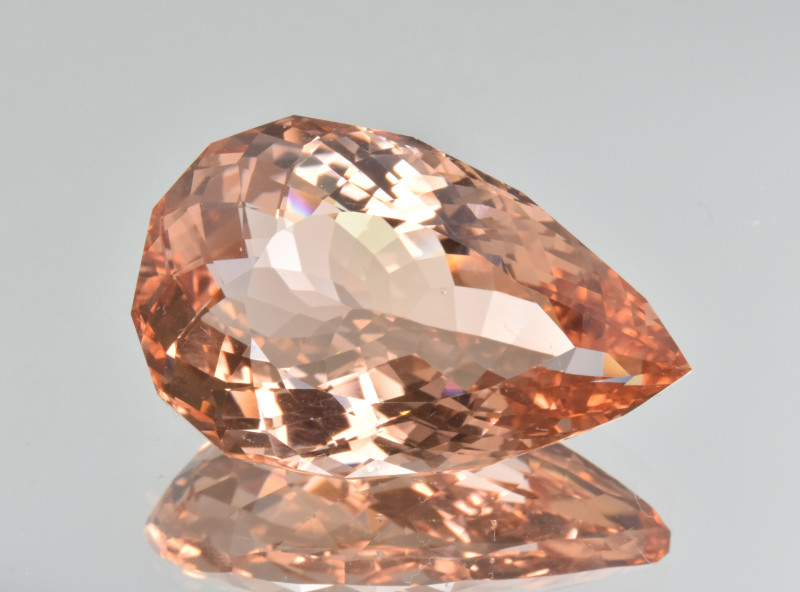
Morganite - Morganite, or “rose beryl,” is a peach or ballet-slipper clear pink stone in the beryl family. Its great durability, clarity, and sparkle make it popular in engagement rings. Morganite can also fuse with aquamarine to create a bi-colored blue and pink gemstone.

Oregon Sunstone: Oregon sunstone is a pink, reddish-pink, or coral-colored gemstone, as well as the rarest (and the only commonly faceted) sunstone. These transparent gems also have multicolored aventurescence and pleochroism. They may appear pink from their body color or aventurescence.
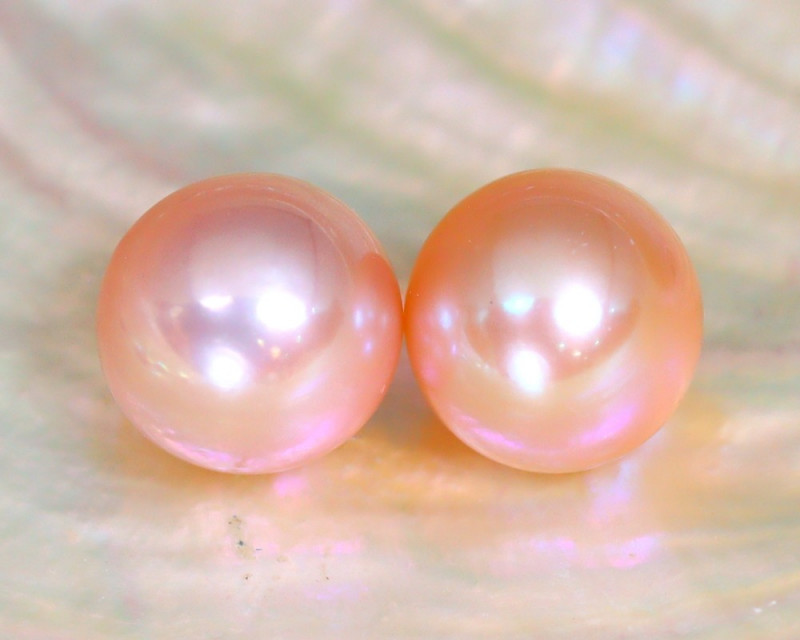
Pearl - Pink pearl is a rose-colored gemstone with cream, tan, or gold undertones. Among pearl colors, pink is a close second in popularity to the standard ivory. Some pink pearls are natural, like the rare conch pearls, while others are dyed to create brighter pink colors.

Rhodolite Garnet - Rhodolite garnets are light rose, violet, or hot pink gems composed of pyrope and almandine garnet. These dark pink gems may be called “grape garnet” and sometimes shift colors under different lighting from red to magenta.

Rhodonite - Rhodonite is a black and pink gemstone and one of the few color-banded pink and red gems, with a rosy-red base and black or brown veins. These opaque pink gems are composed of manganese silica. Many mistake rhodonite for white and pink rhodochrosite.
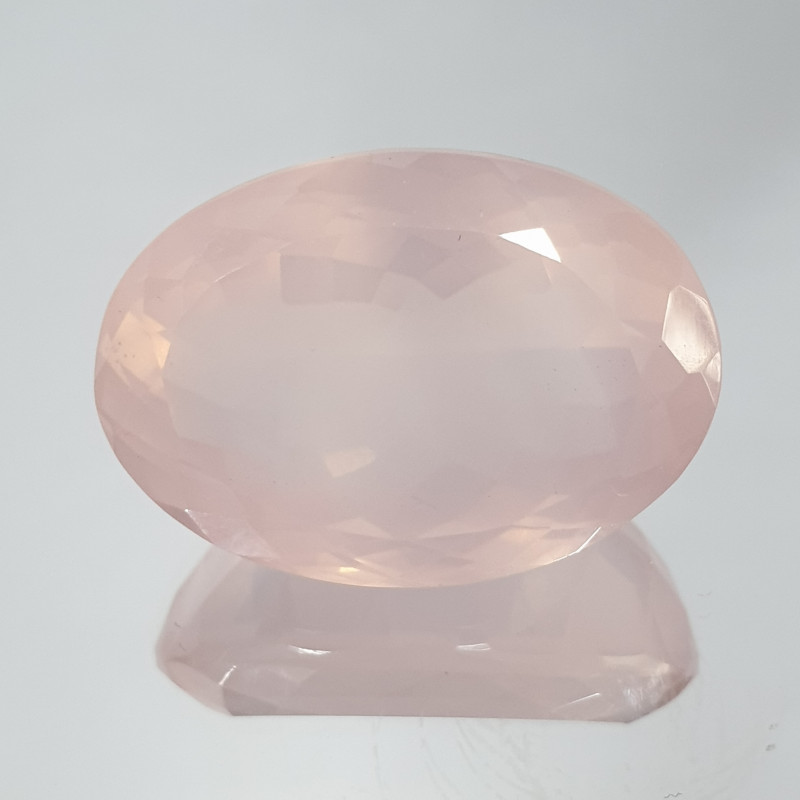
Rose Quartz - Rose quartz is typically a rose-red to light pink semi-precious stone with cloudy translucence. But, you may see it in light coral, lavender, or purple-pink colors. Certain inclusions can create a six-rayed star of light (asterism) in the variety called star rose quartz.
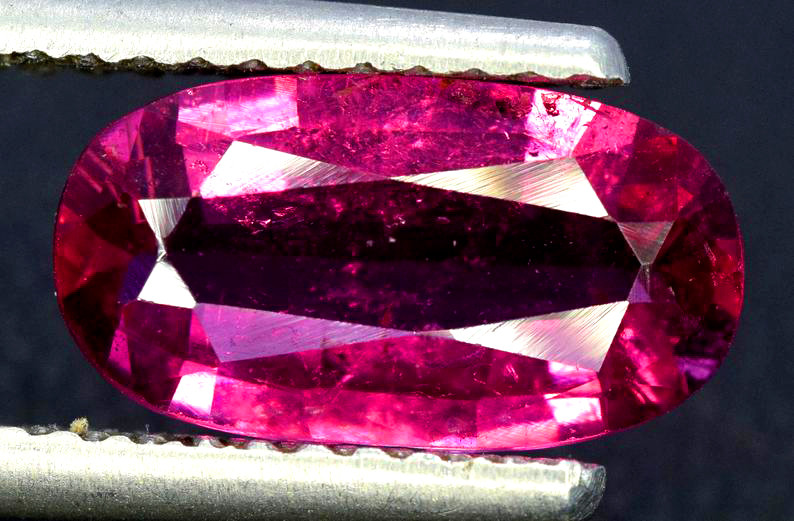
Rubellite Tourmaline - Rubellite is a rich pink, purplish-pink or deep red type of tourmaline that may have undertones in purple, orange, or brown. Pleochroic rubellite crystals show colorless to medium or pale pink color shifts.
White & Colorless Gemstones
White jewels are typically translucent to opaque, while colorless gems are clear, transparent crystals. You may know diamond and quartz, but it’s time to expand your knowledge on types of white stones!

Agate - Of agate’s many colors, white and gray are the most common. White agate is usually cloudy-looking but may look colorless to milky white. These white stone types typically have concentric bands of tan or gray, though varieties like moss agate have a white base with green moss-like patterns. Crazy lace agate is another orange and white stone in the agate family.
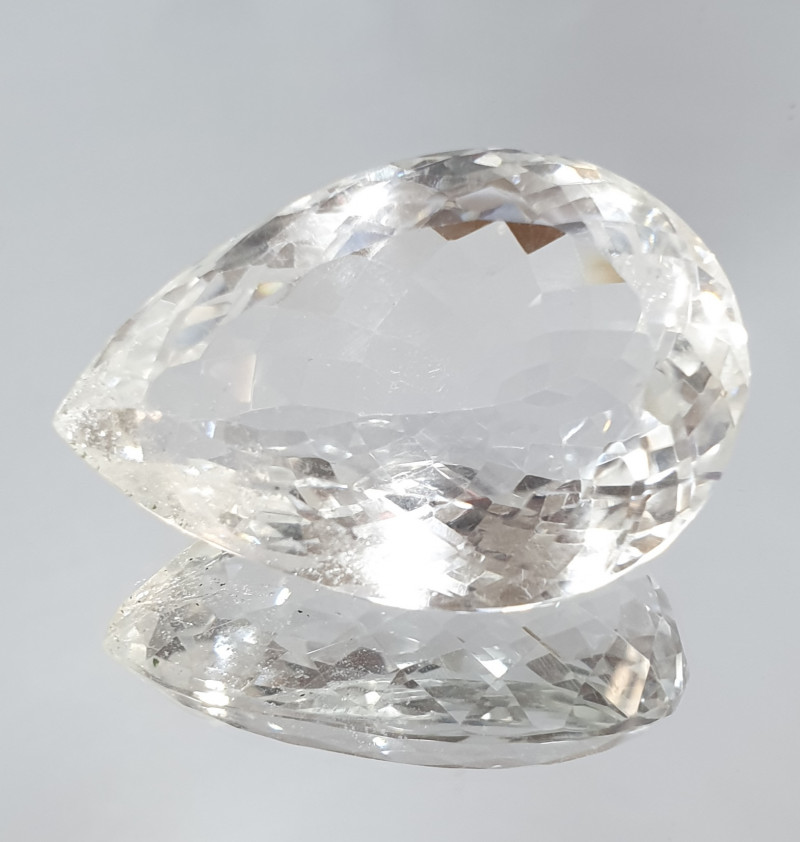
Clear Quartz - Clear quartz is a transparent, colorless gemstone resembling a glacier, with natural varieties showing gas, dust, or liquid-particle inclusions. The most common variety of clear quartz is the more opaque but still shiny milky quartz.
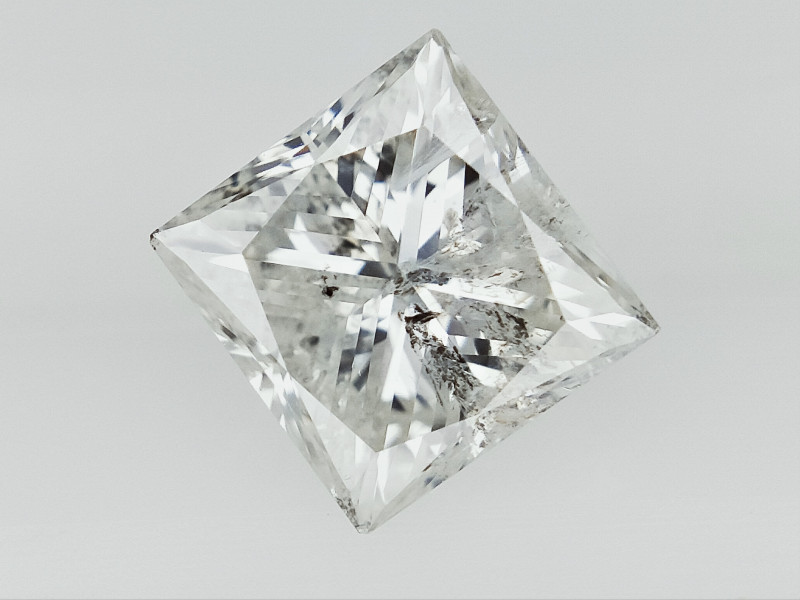
Diamond - White diamonds are colorless to white precious stones with the highest hardness of any gemstone. While not as rare as people think, diamonds are notoriously expensive, so buyers often choose similar-looking colorless alternatives like zircon, white topaz, sapphire, or moissanite for a more affordable option.

Goshenite - Goshenite, or white beryl, is the pure, colorless form of beryl. These clear gemstones are affordable, durable, and often large, with good clarity and hardness.
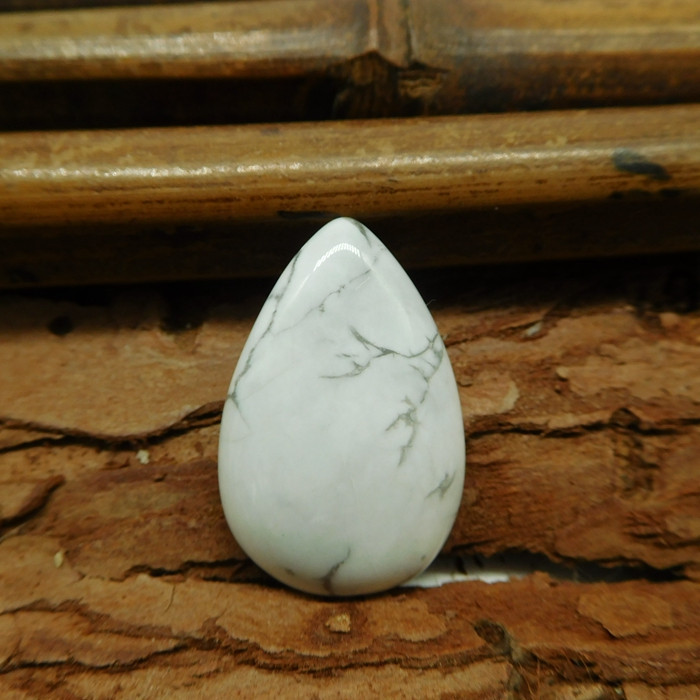
Howlite - Howlite is a milky white gemstone that often has silver veins. These semi-precious stones are rather soft, and they’re known for being dyed to imitate other gemstones like turquoise.
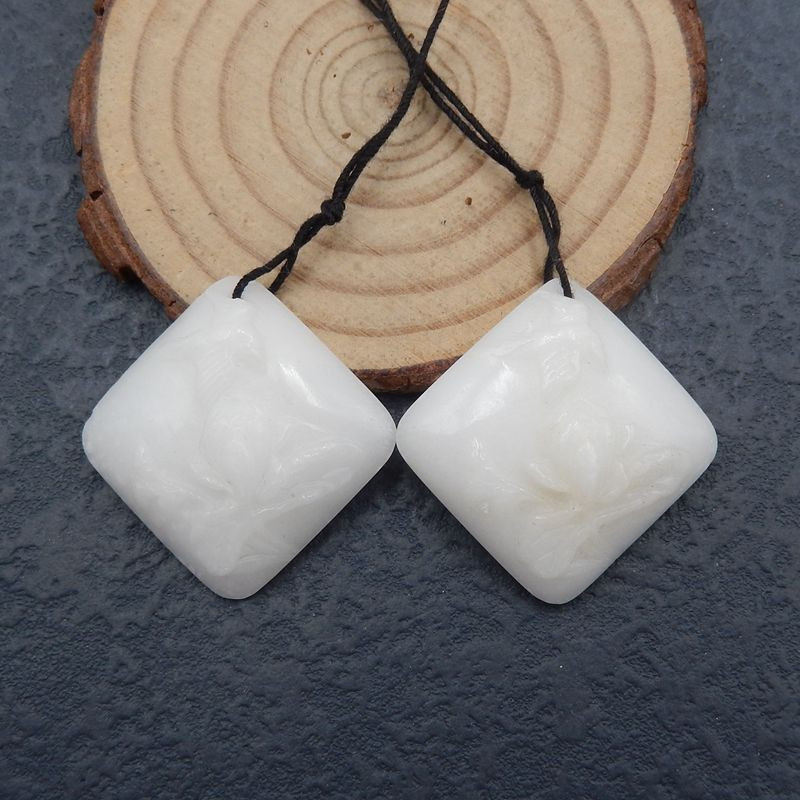
Jade - Nephrite, one of the two jade stones, can be white, off-white, or yellowish-white. Among this white gemstone’s names is “mutton fat jade” in China, or simply “Chinese white jade.” Their appearance is somewhat oily and waxy.

Moissanite: Moissanite is a transparent, commonly colorless gemstone first discovered inside a meteorite crater. Natural moissanites are incredibly rare, so most on the market are synthetic. They're a popular diamond alternative, like cubic zirconia.

Moonstone - Moonstones are semi-transparent white gems composed of feldspar with a signature bluish-white internal glow called adularescence. Star moonstones have inclusions that create asterism, a 4-rayed star reflection. However, “rainbow moonstone” is a misnomer for white labradorite with a multicolored iridescence.

Opal - White opals can be transparent crystal opals, opaque common opals, or precious white opals with colorful iridescence. Generally, white opal may go by “light opal” or “milk opal” for its milky white coloring. Milky white opals are the most common.
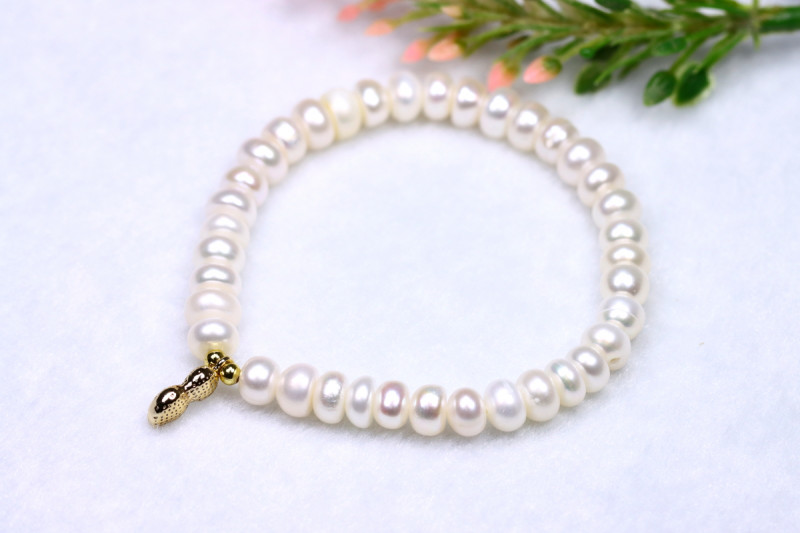
Pearl - Pearls are best-known in white, cream, or ivory colors, which can be natural or cultured. Natural white pearls are rare. You can find shimmering white cultured pearls like Keshi pearls, Akoya pearls, and South Sea pearls.
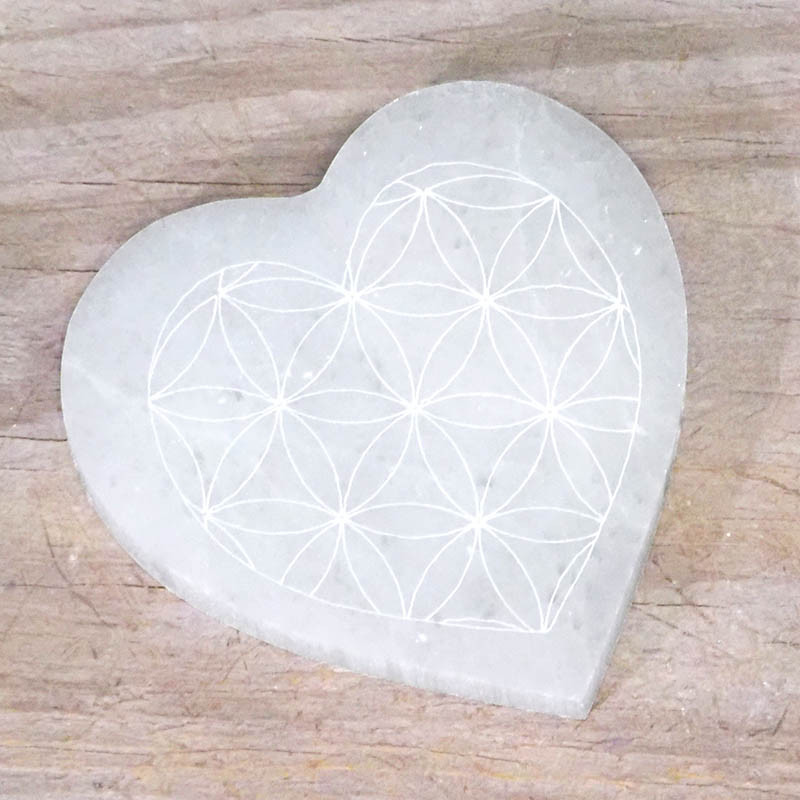
Selenite - A variety of gypsum, selenite is a pearly white to clay-white crystal commonly sold as wands or towers. Sold raw, selenite has unique crystal habits with names based on each shape like desert rose, gypsum flower, and satin spar.
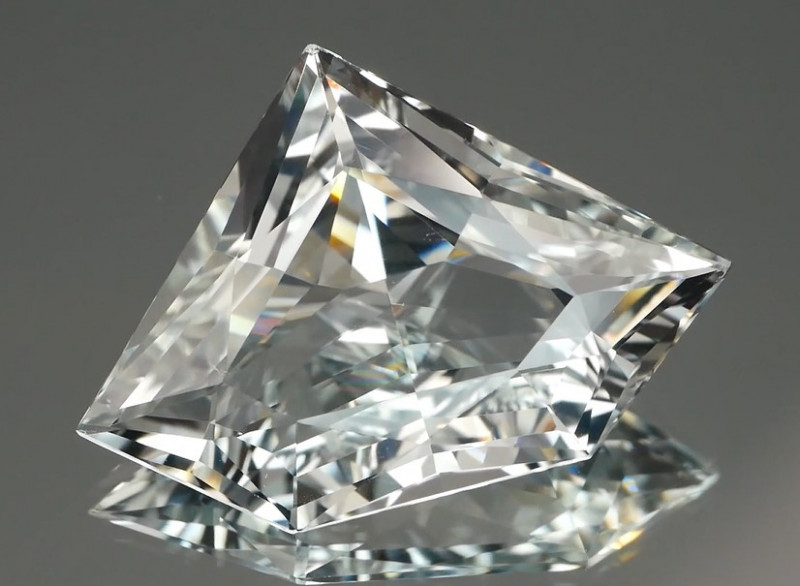
Sapphire - Like many white stones, white sapphire is allochromatic, meaning colorless in pure form. These precious stones are inclusion-free, durable, and an excellent substitute for diamonds when small.
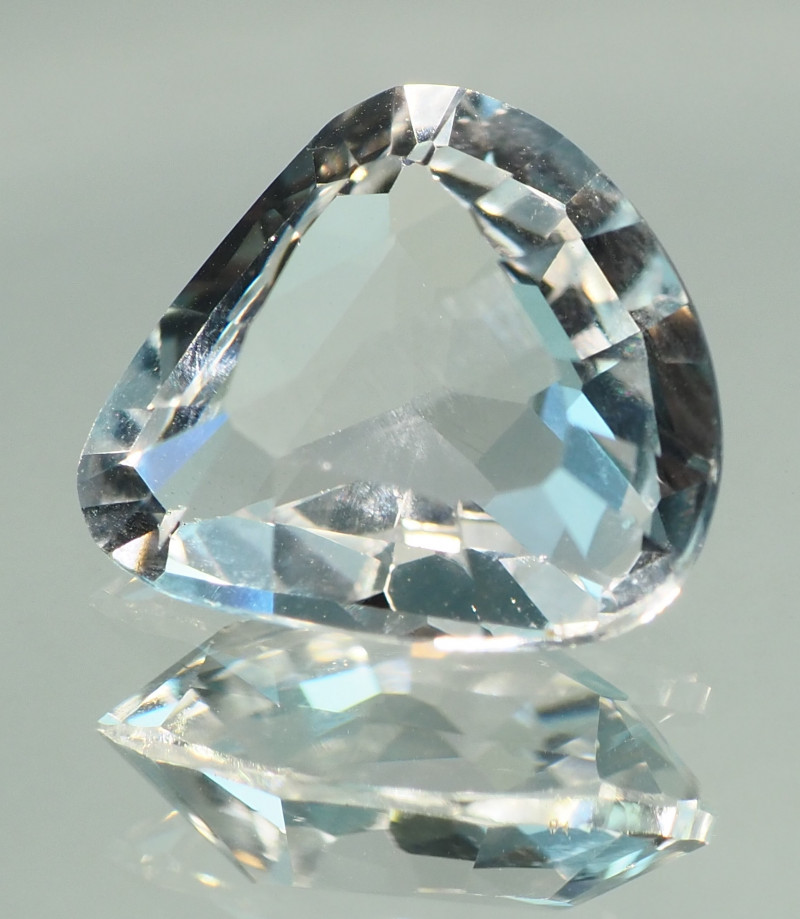
Topaz - Pure topaz appears white to colorless, with good durability and brilliance, but lower sparkle than most white gems. At any size, white topaz is the most affordable topaz color.
Brown Gemstones
Anyone who loves connecting with nature or sporting an earthy style can pick from quite a few brown jewelry stones! Read on to learn about brown stones and crystals!
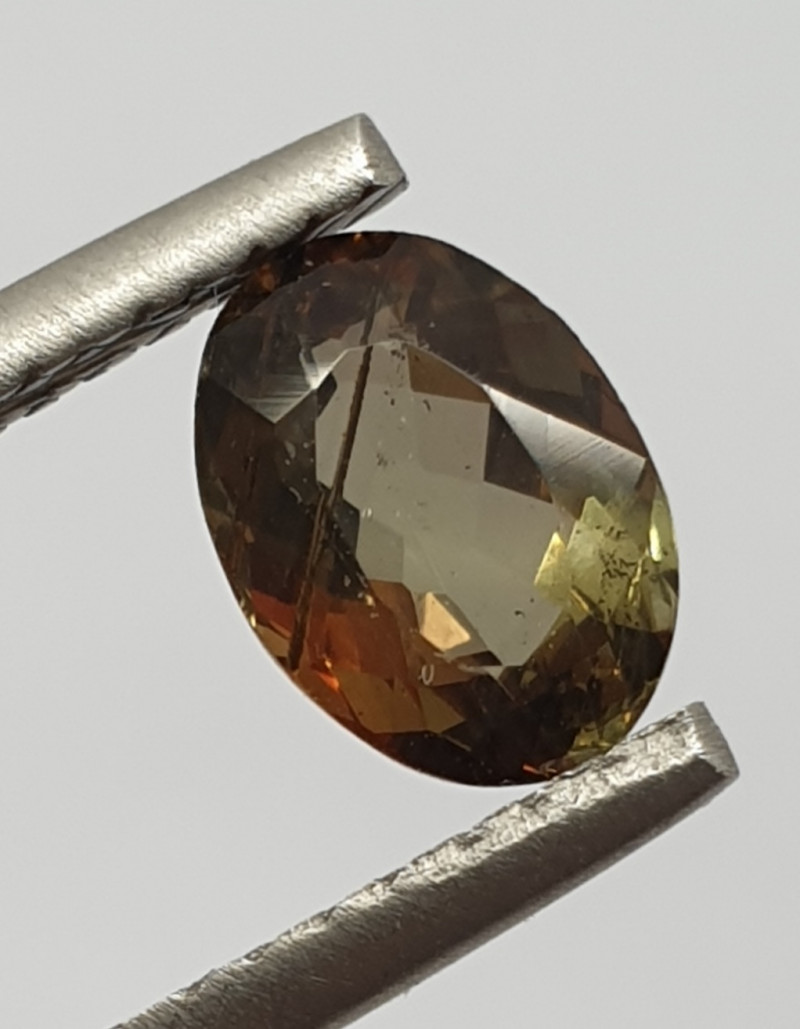
Andalusite - Andalusite is a lesser-known brown semi-precious stone, most often yellow to brown. These brown gems have impressive pleochroism in red, gold, and green, though Brazilian andalusite has olive-green to pale orange-brown pleochroism. One variety, viridine, has green to brown coloring.

Boulder Opal - Boulder opals are an almost exclusively Australian find with patches or seams of precious opal throughout its brown ironstone or sandstone host rock (the rock it formed inside). Boulder matrix opals have caramel to dark brown rocks as their host rocks, with more evenly dispersed seams of precious opal throughout the rock.
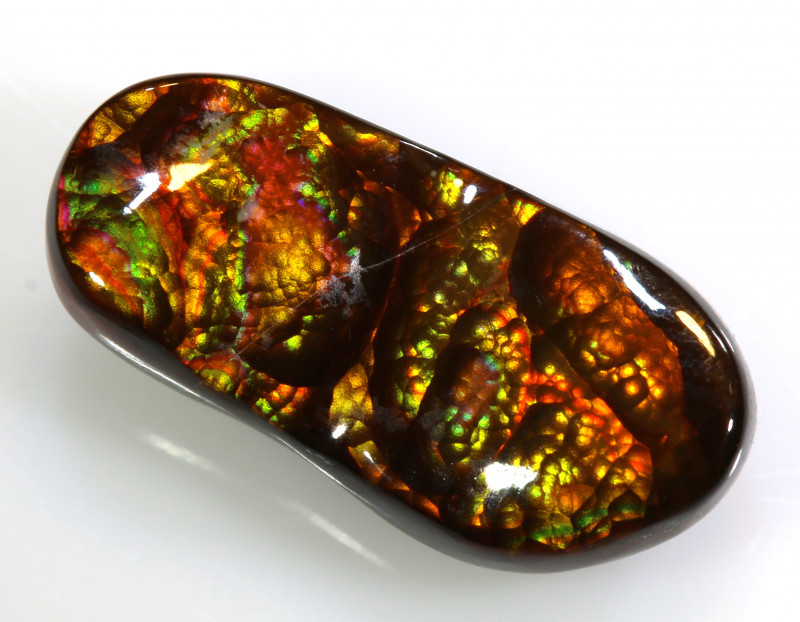
Fire Agate - Fire agate is a semi-transparent reddish-brown to black gem with fiery iridescence in red, orange, gold, green, and blue. These rare agates are the only variety with iridescence, but they’re usually cut into freeform (rather than traditional) shapes.

Hessonite Garnet - Hessonite, or “cinnamon stone,” is a cinnamon-brown, amber, or yellow-orange gemstone in the grossular garnet family. Apatite crystals commonly grow into the stone, making the light brown gem’s interior look turbid.
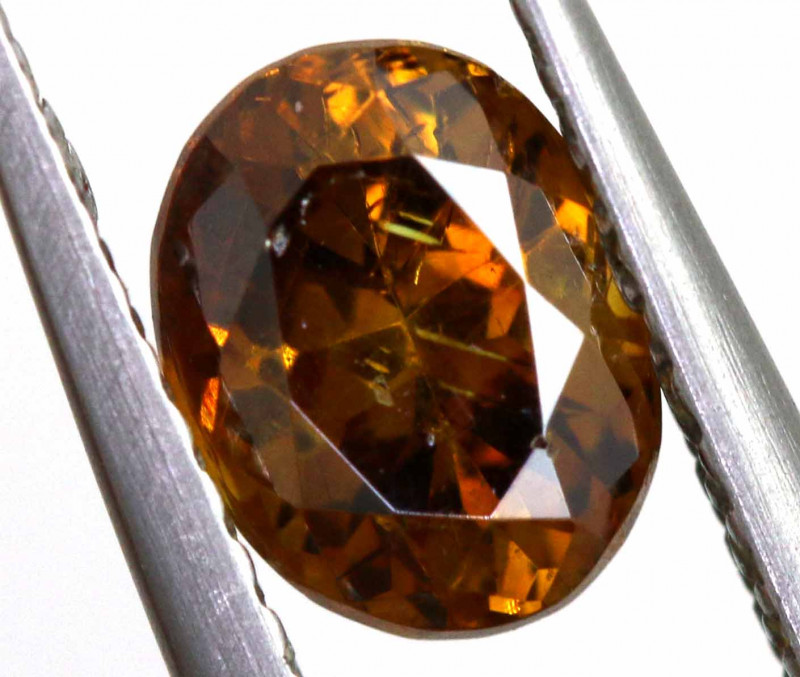
Sphalerite - Sphalerite, or zinc blende, is a brownish-red gemstone, though it also comes in tan, dark brown, black, and other colors. This brown-colored stone’s stand-out feature is its fire (colorful sparkle) which is three times greater than diamond’s fire!

Chocolate Opal - Chocolate opal is an Ethiopian precious opal variety with a light to dark chocolate-brown body tone. Dark brown gemstones are more valuable, as they provide better contrast for the colorful iridescence, making the colors appear brighter. Chocolate opals treated with a smoking method (called smoked Ethiopian opal) are darker and make an affordable substitute for Australian black opal.

Sillimanite - Sillimanite, also called sillimanite cat’s eye or fibrolite, is usually an opaque, reddish-brown to reddish-black crystal with a silver “cat’s eye” stripe of light down the center. However, sillimanite can be transparent with no cat’s eye.
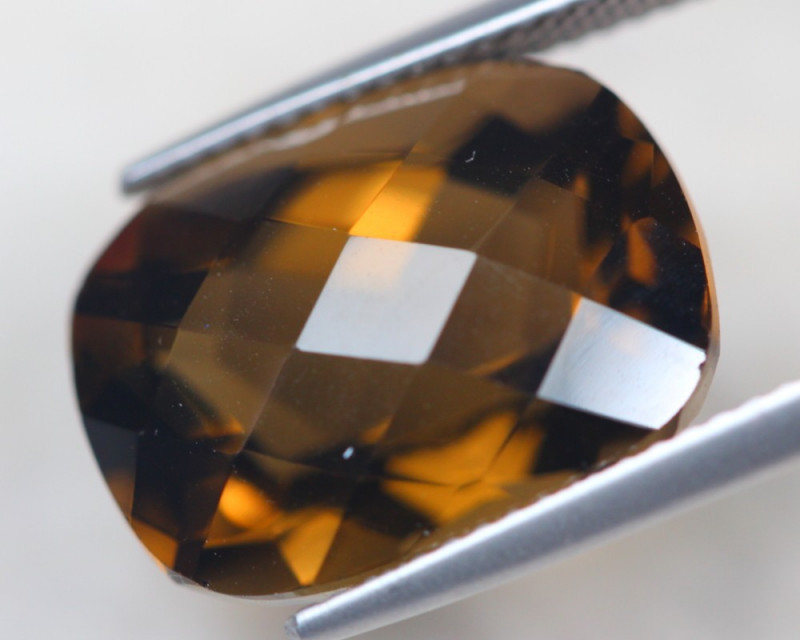
Smoky Quartz - Smoky quartz is a medium to light brown gemstone with a translucence that makes it look like smoke is inside. This brown quartz is dichroic, showing shades of yellowish-brown and reddish-brown at different angles.

Tiger’s Eye - Tiger’s eye is an amber to golden-brown gemstone with gray and black stripes. This unique brown jewel stone shows simple chatoyancy — like the “cat’s eye” effect, but multiple streaks of light instead of one.
Grey Gemstones
For anyone with a black and white style, gray stone jewelry makes the perfect accessory to both match and stand out. We’ll fill you in on all the silver to gray gemstone names and features!
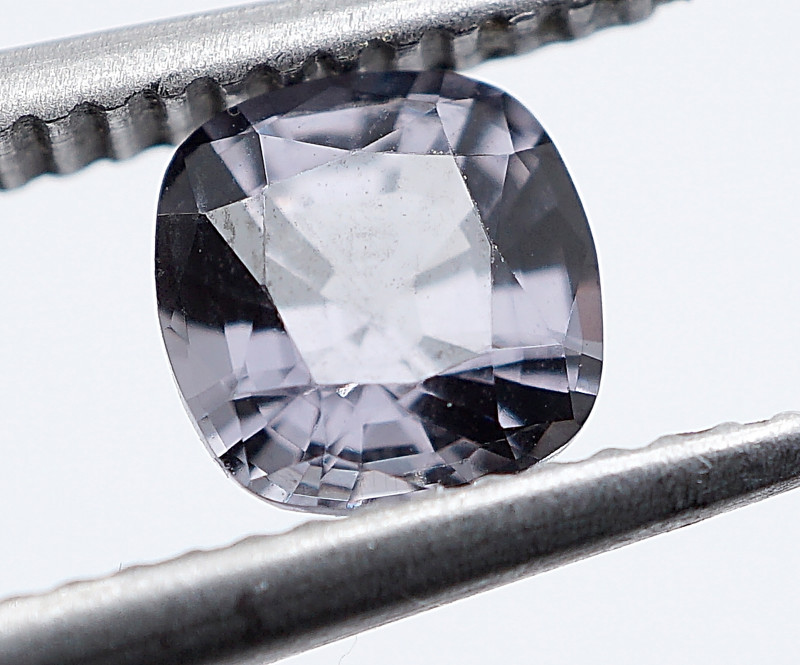
Alexandrite Spinel - Alexandrite spinel is a color-changing gemstone that’s bluish-gray in daylight and violet under incandescence. While not related to alexandrite, this mostly transparent spinel variety resembles alexandrite’s color change.

Botswana Agate - Botswana agate is most often a gray, white, or brown stone with striped bands of white, gray, black, pink, blue, green, or a combination of these. These translucent, rare grey crystals are considered the most valuable type of agate.
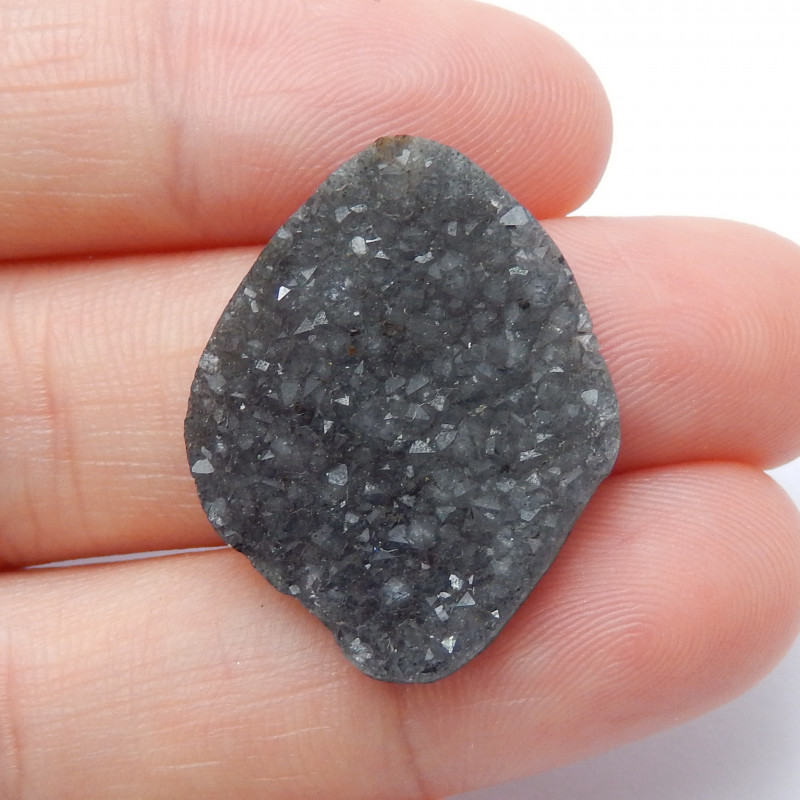
Druzy - Found inside geodes, druzy is a form of gray quartz comprising many tiny crystals. The many crystals in this gray semi-precious stone sparkle like fresh snow. The terms “druzy,” “drusy,” or “druse” may follow other gemstones (like “azurite druzy”) to describe specimens found in small crystal aggregates.
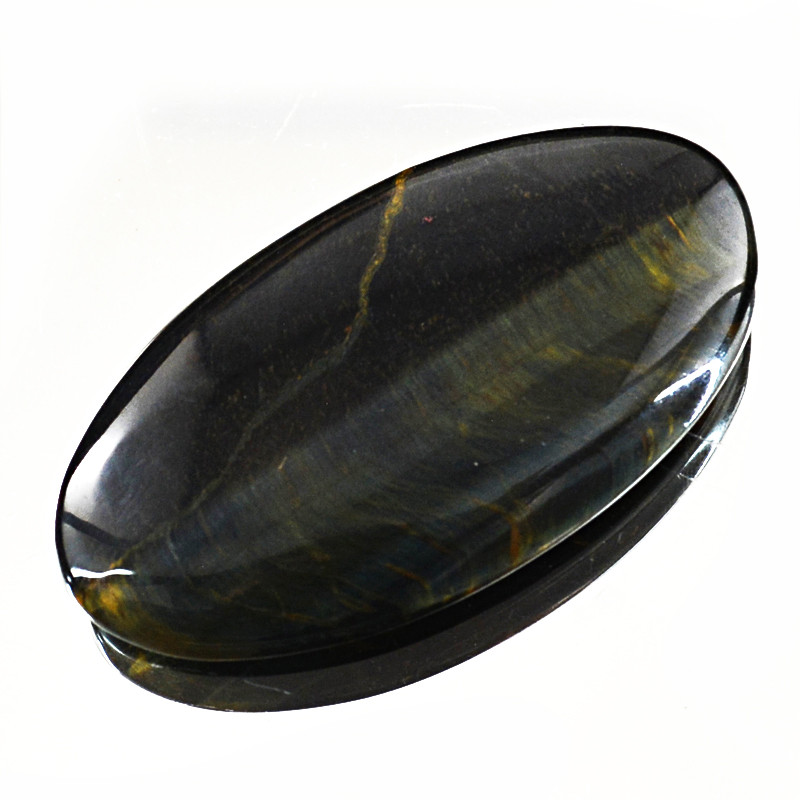
Hawk’s Eye - Hawk’s eye is an opaque gem that’s gray, gray-blue, or blue-green with simple chatoyancy (multiple reflected lines of light) and dark lines of black, golden-brown, or deep blue. Hawk’s eye is essentially a tiger's eye with minimal iron and may be called “blue tiger’s eye” or “falcon’s eye.”
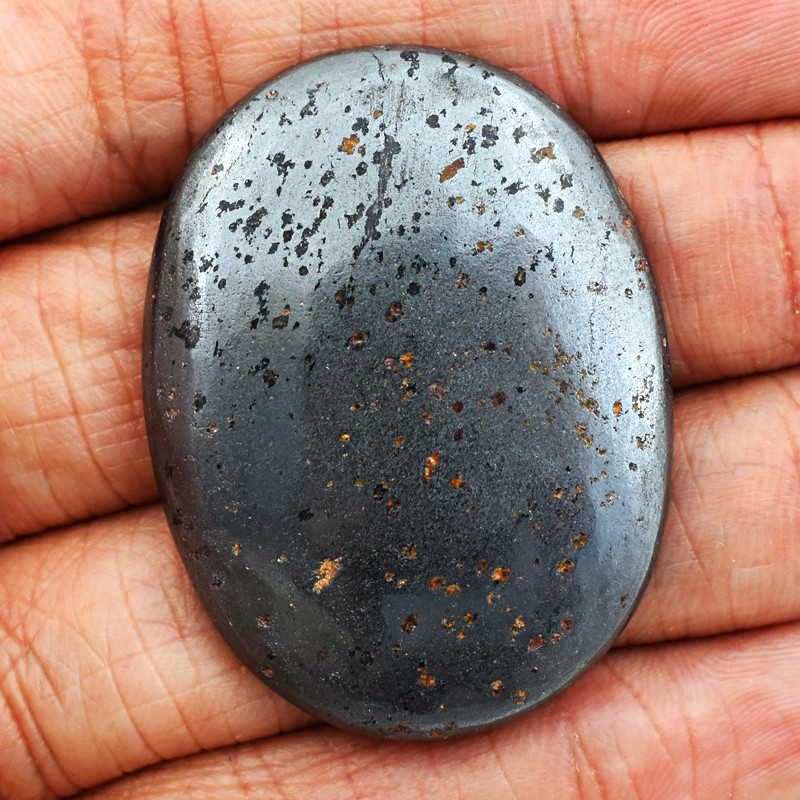
Hematite - Hematite, or haematite, is a metallic, silver to dark gray stone that shows a blood-red pigment when sliced or scraped. You may see hints of red, reddish-brown, or golden coloring on the stone.
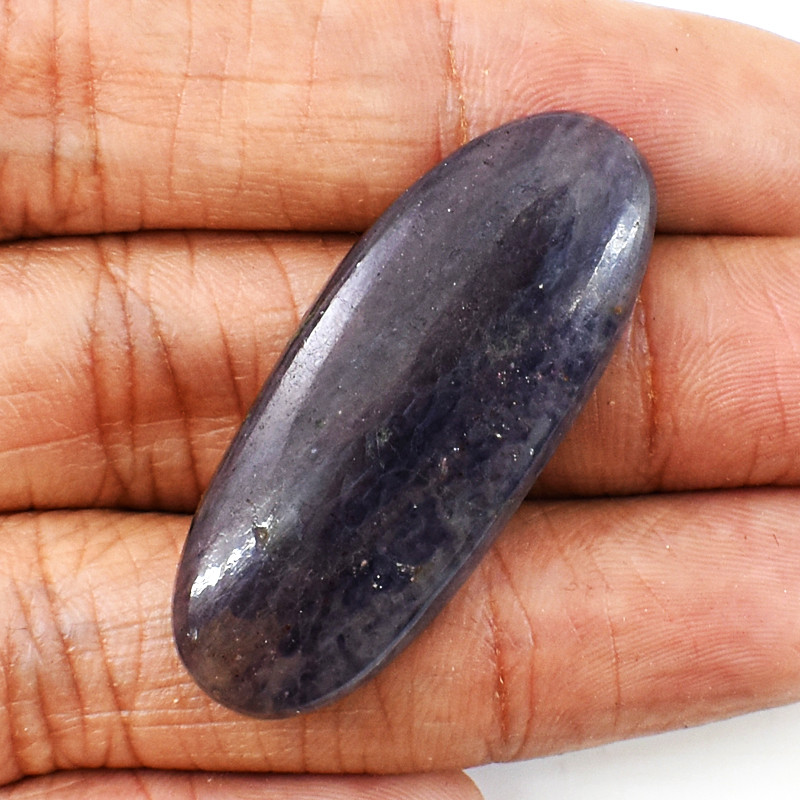
Iolite - Iolite is a violet-blue cordierite stone with gray undertones that may be strong enough to make the stone appear violet-gray. The stone is also pleochroic, shifting from blue to yellow under different angles and lighting.

Labradorite - Labradorite is a gray gemstone with a unique internal iridescence called “labradorescence” or “schiller.” These feldspar gems have many varieties, like spectrolite, andesine-labradorite, and rainbow moonstone.

Niccolo Onyx - Onyx is a parallel-banded chalcedony variety, and Niccolo onyx has gray to black bases with translucent, blue-gray banding. Onyx is sometimes called an agate variety, but others define agate as having concentric, not parallel, banding.

Snowflake Obsidian - Snowflake obsidian is a variety of black volcanic glass called obsidian. This gray and white stone has whitish- or bluish-gray speckles resembling snowflakes across its surface.

Tahitian Pearl - Tahitian pearls, also called “black pearls,” are a rare pearl type from French Polynesia, ranging from black to white but typically showing gray and silver hues. These are the second-most valuable type of pearl.
Black Gemstones
Black gemstones offer sophistication and intrigue, whether it’s popular varieties like black tourmaline and onyx or lesser-known gems like melanite and carbonado. Join us through our list of black crystals and stones!

Black Opal - “Black opal” or “dark opal” describes any opal with a dark to black body tone, including dark gray and deep green. Black opal is the rarest opal variety and one of the rarest gems, renowned for its vibrant play-of-color.
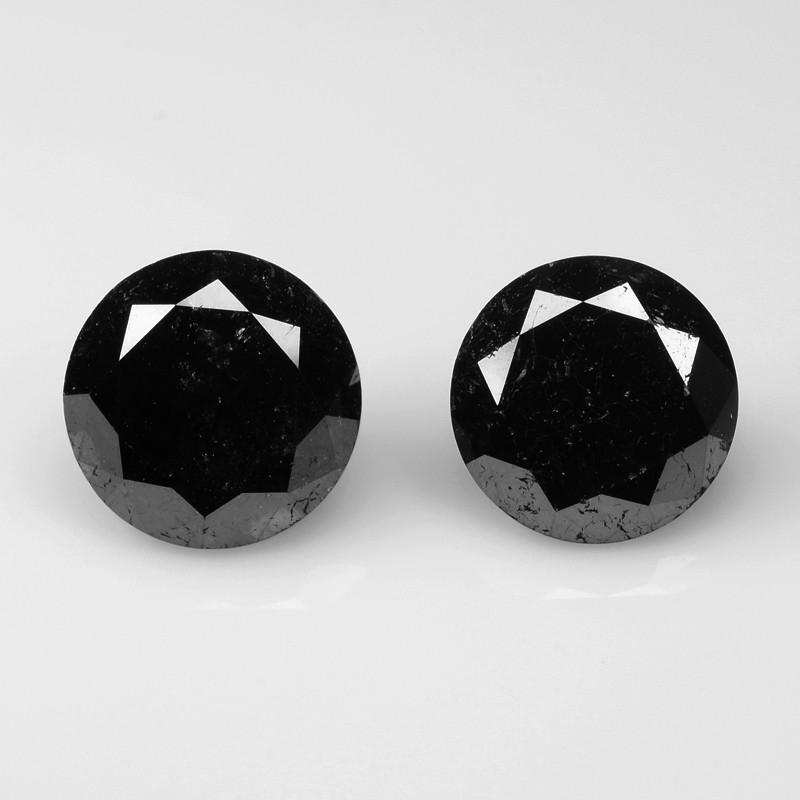
Carbonado Diamond - Carbonado diamonds are metallic-looking black diamonds with a unique chemical makeup and crystal structure, leading scientists to theorize they originated from outer space. One recent, record-breaking carbonado is the Enigma black diamond, a 555.55-carat treasure.
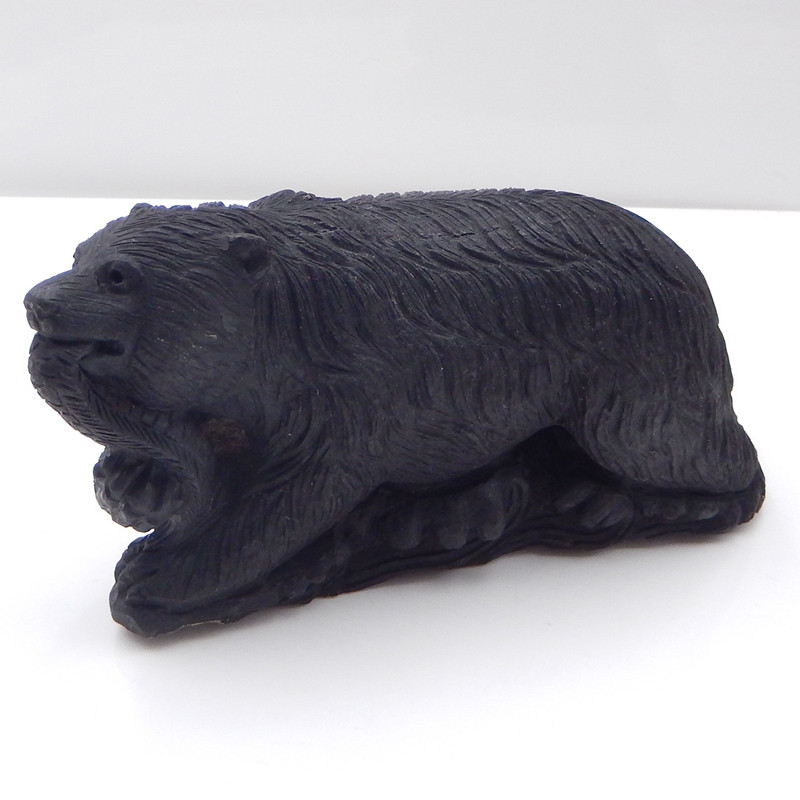
Jet - Jet is a type of coal formed when pressure and heat fossilize decaying wood, turning it into lignite. These organic black gemstones come in two types: hard and soft, and are popular for beads and carvings.
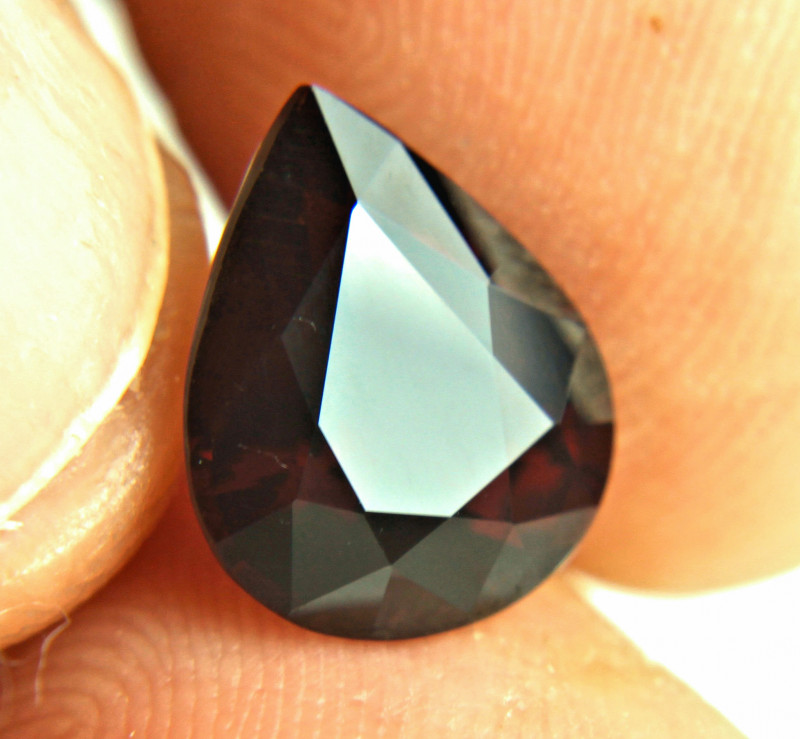
Melanite Garnet - Melanite, or titanian andradite, is an opaque, black garnet variety with a glossy luster and higher dispersion (fire) than diamond. These opaque gemstones can also be dark chocolate-colored, called “chocolate melanite garnet.”

Obsidian - Obsidian is a rhyolitic volcanic glass, usually creating deep black or blackish-green gemstones, sometimes with gray or brown streaks. Other varieties include the bluish-black sheen obsidian and rainbow obsidian, a black to dark brown type with colorful bands of iridescence.

Onyx - Black onyx crystals are black and white gemstones created from layers of chalcedony. These stones have midnight black bodies with milky white or cream parallel bands. Though rare, naturally solid-black onyx exists.

Tahitian Pearl - Grown in Polynesia, Tahitian pearls or “black pearls” are dark to deep black or silver-colored pearls with iridescent, colorful undertones. These are the second most expensive type of pearl, formed by the black-lipped pearl oyster into big and often perfectly round shapes.
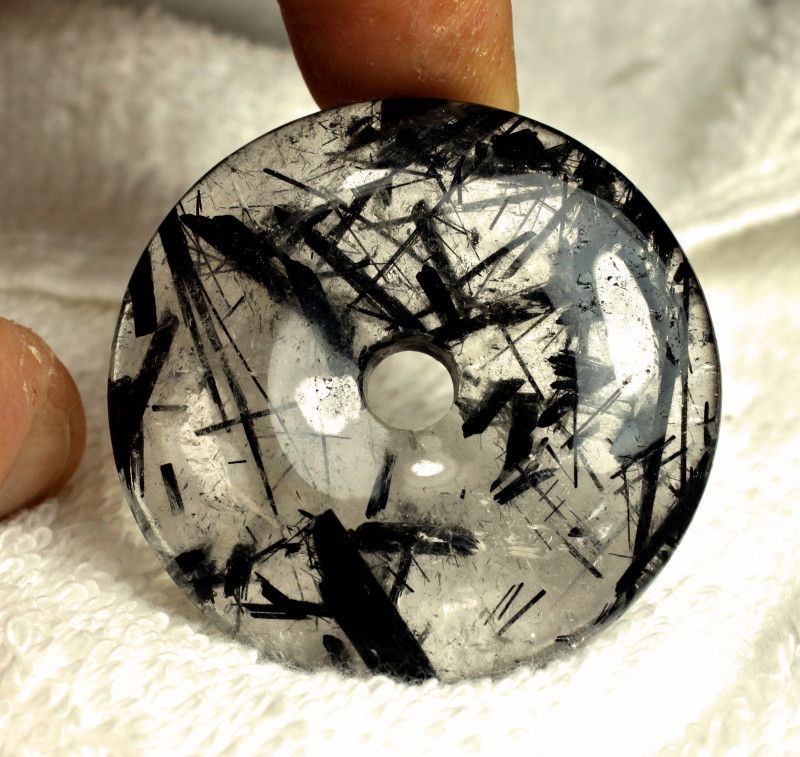
Tourmalated Quartz - Tourmalated quartz is a clear quartz with black or dark brown tourmaline inclusions resembling needles inside. It may be called tourmalinated quartz or tourmaline quartz.

Tourmaline - Black tourmaline is schorl, the most common tourmaline species. These bluish-black, brownish-black, greenish-black, or solid black crystals are magnetic, pyroelectric (can hold an electrical charge when heated), and piezoelectric (can hold electrical charge under pressure).

Zebra Jasper - Zebra jasper is an opaque, black and white striped or patterned gem. This black and white gemstone’s names include “zebra stone,” “zebra agate,” or “zebra marble,” and can show other colors besides white like gray, reddish-brown, or yellow.
Multicolored Gemstones
Multicolor gemstones show multiple distinct colors, either through color-zoning or pleochroism (different colors at different viewing angles). These differ from color-changing gemstones because multicolor gems show multiple colors regardless of the type of lighting.
Let’s take a trip across the rainbow of multicolored gemstones!
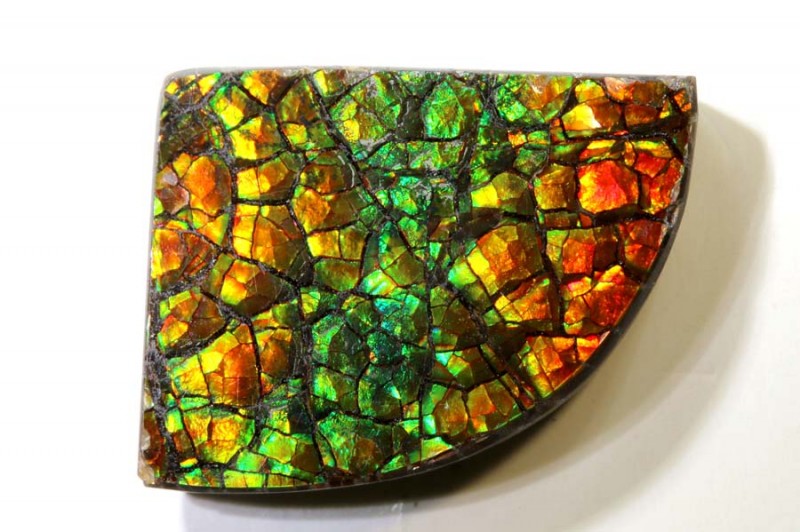
Ammolite - Ammolite, or Canadian ammolite, is the name for parts of the fossil ammonite that shine with iridescent colors. These organic, multicolored gems are opaque and usually orange and green gemstones but can show every color of the rainbow.

Iris Agate - Iris agate, or Wyoming iris agate, is a translucent, finely banded stone that shows reflective, multicolored lines with backlighting. Under regular light, the multicolored stone has soft, milky bands that are usually orange, red, yellow, brown, and cream.
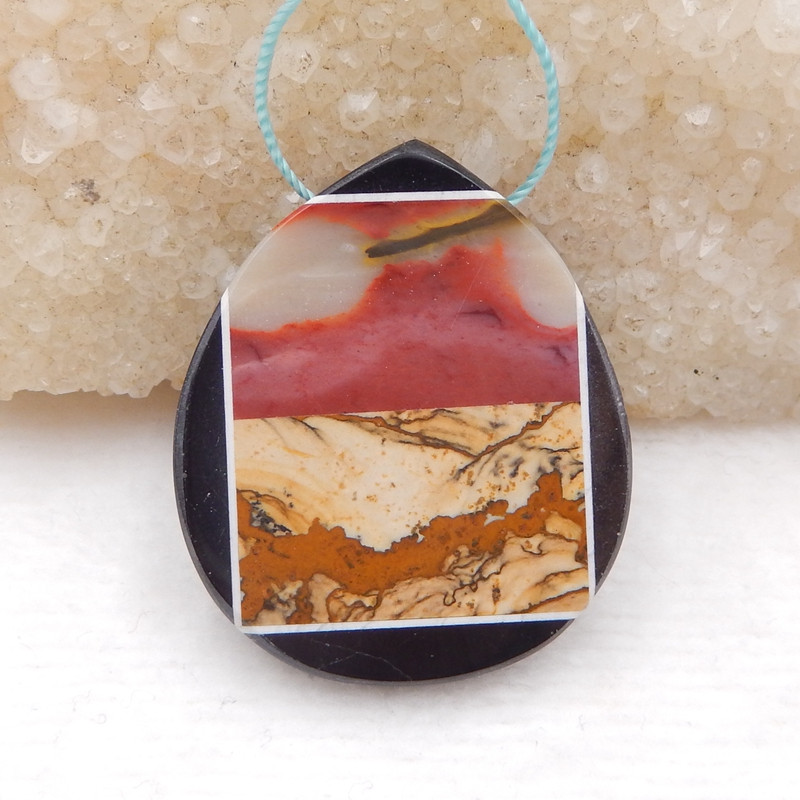
Jasper - Jasper is an opaque chalcedony almost always found as patterned, multicolor gemstones. Notable multicolored jaspers are gray-and-red brecciated jasper, the yellow-red-and-brown mookaite jasper, and the ocean jasper, which shows various color combinations like red, yellow, green, and white.
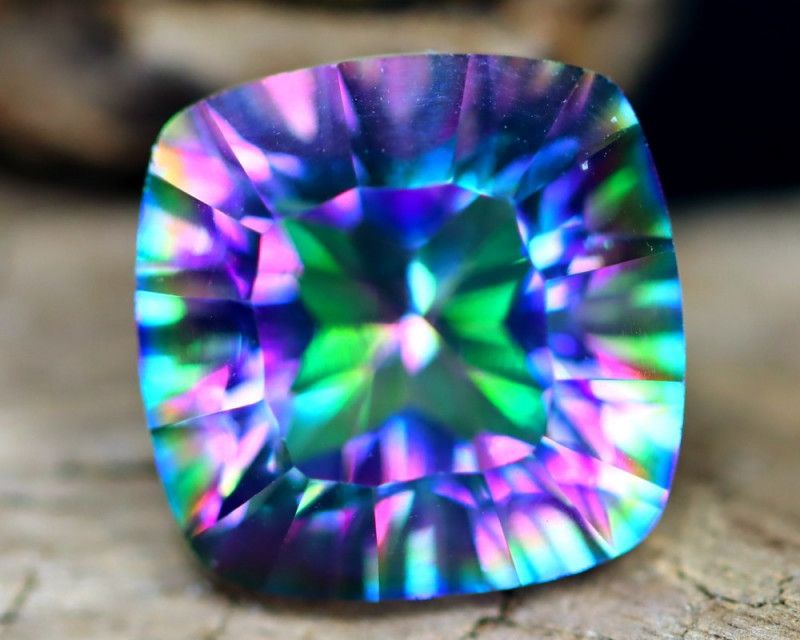
Mystic Topaz - Mystic topaz, or Azotic topaz, is a topaz that’s been artificially enhanced to become a vibrant, rainbow gemstone. The enhancement process, called chemical vapors disposition or CVD, involves coating a colorless topaz with a thin film layer. The trademarked Azotic topaz stones show warmer hues, while mystic topaz is predominantly purple and green.

Mystic Quartz - Mystic quartz, rainbow quartz, and aurora quartz all refer to an enhanced quartz stone with an impermanent, kaleidoscopic rainbow of colors. Like mystic topaz, mystic quartz stones undergo a similar surface coating process to gain their iridescence. Rainbow aura quartz is similar but treated with titanium.
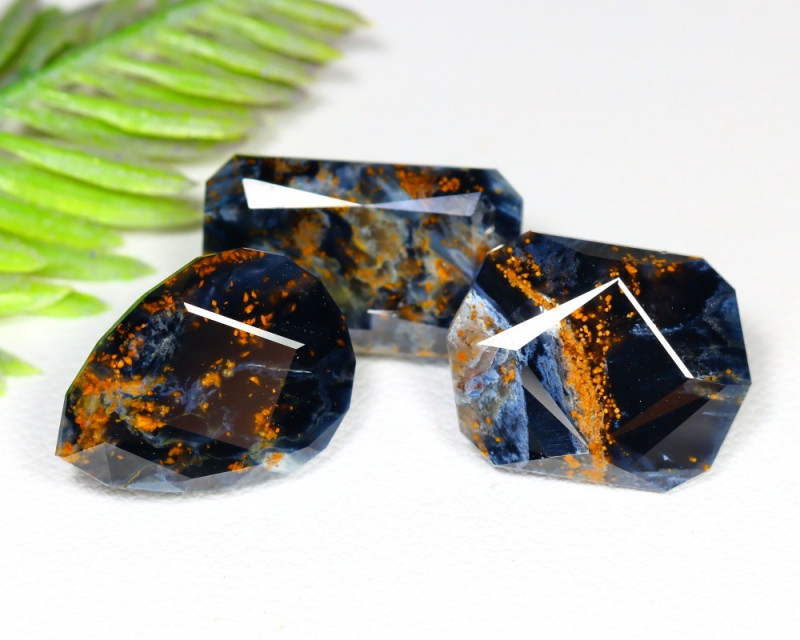
Pietersite - Pietersite, or eagle’s eye, is a patterned chalcedony aggregate made up of tiger’s eye and hawk’s eye fragments cemented by quartz. The stone is almost always multicolored, with a gray-blue or orange-red base and lines or swirls in varied directions. The blue and orange gemstone is chatoyant but with chaotic, multi-directional streaks of light.
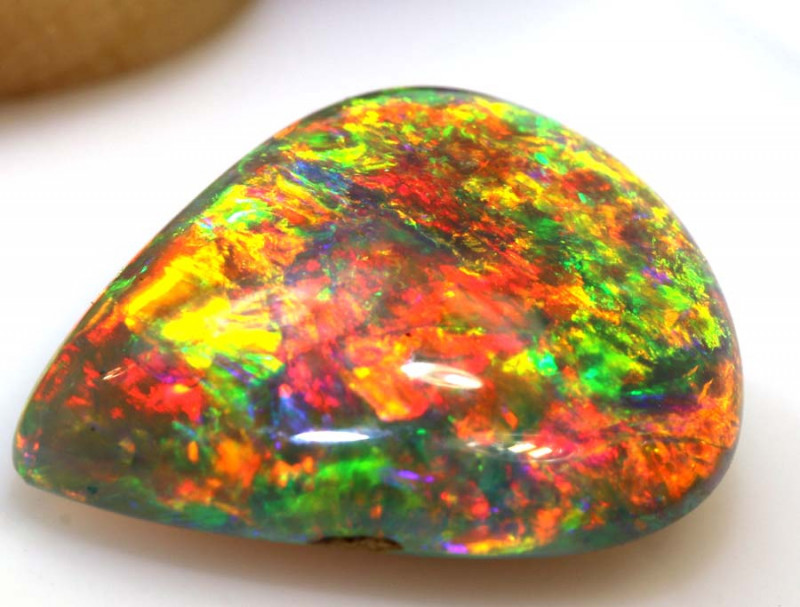
Precious Opal - Precious opals are any opal variety with play-of-color, where light reflects multiple, different colors across the stone. Precious black opals are the most valuable, but you’ll also find precious fire opal, precious white opal, precious crystal opal, and more.
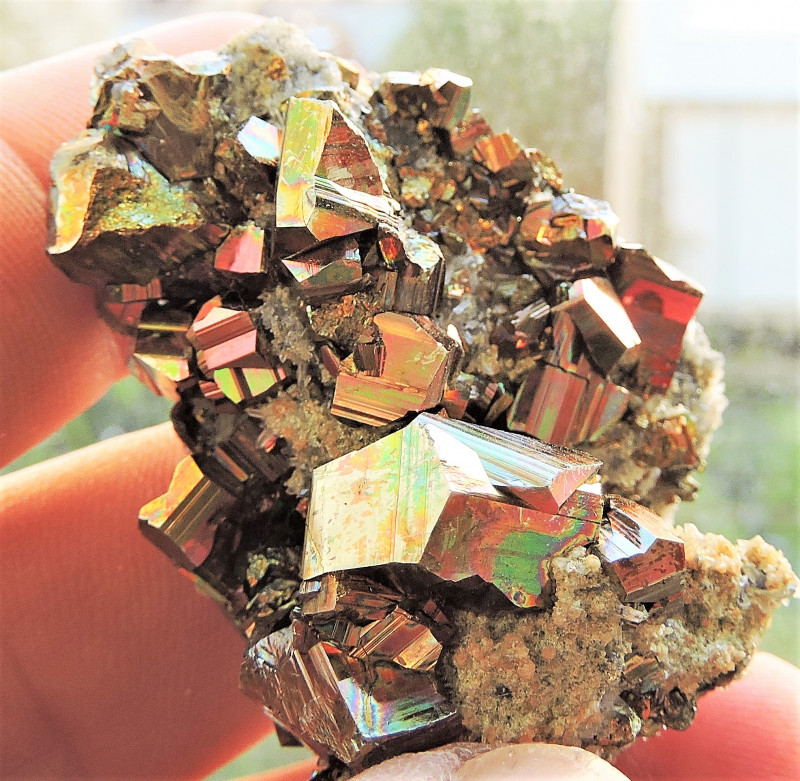
Rainbow Pyrite - Rainbow pyrite, or iridescent pyrite, is a type of pyrite druzy with iridescent colors and metallic luster. It’s only mined in Russia’s Volga River banks during the summer months.

Spectrolite - Exclusive to Finland, spectrolite is a rare labradorite variety with unique labradorescence that shows every rainbow color. Like labradorite, spectrolites usually have a dark base, but spectrolite is closer to opaque while labradorite is closer to transparent.

Watermelon Tourmaline - Watermelon tourmaline is an elbaite tourmaline, a bi-colored pink and green gemstone. Its color-zoning may show pink at the center and green around the edge, like sliced watermelon, or distinct ombre-like sections along the vertical crystal.
Let Your True Colors Shine!
Colored gemstones may come in groups, but like people, each one brings its own flavor! Whether you have a favorite color or you’re open to exploration, every gemstone color category is rich with diverse potential.
As English novelist, Mary Ann Evans (AKA George Eliot) once wrote: “These gems have life in them: their colors speak, say what words fail.”
Explore the range of colored gemstones and find your favorite!
Search the Gemstone Encyclopedia
Related Auctions
Related Articles
Everyone has a gemstone that corresponds with their star sign. These are also known as your Star Stone. Learn more about these stones and find out what your Star Stone is.
10th May 2018
Originally the Birthstones or gemstones were associated with a zodiac sign or the month of a individuals birth. Find out what your stone is and view the stones we have for sale
8th Feb 2021
There are so many tools on the market for testing a gemstone, but what are the main tools required for simple analysis. Lets look at four tools for gemstone testing.
4th Mar 2020
Latest Articles
Tantalite is a group of red, brown, or black minerals containing the rare and valuable element tantalum. Discover the uses, history, prices, and properties of tantalite gemstones in this guide!
11th Nov 2024
Hodgkinsonite is a very rare collector’s gemstone known for its vibrant pink or purple hues, only found in New Jersey, USA. Learn hodgkinsonite’s prices, history, properties, and traits in this guide!
9th Jun 2024
Canasite is a rare mineral usually found as greenish-yellow inclusions in charoite but also known as a purple gemstone. Learn canasite’s history, varieties, properties, and prices in this guide.
27th May 2024
Article Categories
How To's is where you will find helpful articles from gem Rock Auctions on how to cut gemstones, select gemstones and buy gemstones.
9 Articles








